Chemistry and Chemists № 1 2024
Journal of Chemists-Enthusiasts
| Content | Chemistry experiments - video | Physics experiments - video | Home Page - Chemistry and Chemists |
|
Chemistry and Chemists № 1 2024 Journal of Chemists-Enthusiasts |
Flowers change colour: effect of alkalis and acids on plant dyes - pt.20, 21, 22 V.M. Viter |
|
Having noticed a mistake in the text, allocate it and press Ctrl-Enter
How to turn red apple into black one - pt.20
How to make a black apple? Theoretically, the answer can be given based on the results of the previous experiment: you need to take a red apple and place it in an ammonia atmosphere. If the red peel of an apple turned black in a concentrated ammonia solution, can the same transformation be done with a whole apple? At first glance, it is possible. However, besides theory, there is practice. I was not sure the experiment would be successful with a whole apple. Diffusion of ammonia into plant tissue does not occur instantly, primarily through the outer epithelium. If you have to wait for several hours, such an experience is unsuitable for demonstration in front of an audience. Even if time is not an issue, prolonged exposure to a strongly alkaline solution (in the presence of oxygen) may lead to other transformations that may spoil the effect. To answer this question, you need to experiment. I bought beautiful-looking red apples; the variety is called "Red Chief" (at least, that was written on the price tag, although sellers cannot be trusted nowadays). Problem number one: the apples did not fit into the available beakers. I had to use an ugly 5-litre jar (its glass had many defects and distorted the image). I placed the apple at the bottom of the jar. Then, I added a concentrated ammonia solution and accidentally splashed the jar's walls. Drops of ammonia on the glass spoiled the image. Once again, I cursed my carelessness. But the experiment had begun - it was too late to dry the glass. The first seconds passed, but nothing changed: the ammonia solution flowed down the surface of the apple. Later, dark dots appeared on the surface of the apple, but I saw this only when watching the filmed video. I did not notice any changes when directly observing the experiment, so I left the apple for 25 minutes (I got busy with other experiments). The first thing I saw when I returned was the jar's walls, which were fogged up (they were covered with tiny droplets of condensation). Therefore, I did not have to worry about my carelessness, due to which the drops of the ammonia solution got on the glass. The transparency of the jar's walls had deteriorated due to the condensation. Fortunately, it did not matter... The apple in the jar turned completely black! I took out the apple (wow! ammonia stings my skin!) and examined it. Yes, the apple was almost black. A green tint appeared in places, and a white coating was visible on the peel (apparently, this was a wax film). Later, carefully examining the video, I noticed that the colour was not pure black but dark brown (this is clearly visible if you use a dark background). While the author was busy doing "the photo shoot with the exotic fruit", I did not notice the main thing. It was hard to expect such a transformation. I wanted something like this to happen but rejected the possibility: "This is too good to be true..." While I took photos and videos, "the clock was ticking", and the colour of the apple continued to change! After I removed the apple from the ammonia atmosphere, its surface became increasingly lighter. At first, the apple seemed black to me. The reality was different. Immediately after the treatment, the apple's colour was dark brown (not black), but I noticed this only when I watched the video. However, over time, it became easily visible that the apple was dark brown. As a result of the change of colour (from almost black to brown), greenish areas on the surface became more visible. For comparison, I placed next to it a "control sample" (the same red apple, but not treated with ammonia). The difference between the object's initial and final state became clearer. I left the apple (treated with ammonia) for 24 hours. As a result, the apple almost returned to its original appearance! The apple turned red and looked almost the same as before the ammonia treatment! The only difference was some brownish areas. However, similar brown areas appear on regular apples when the fruit begins to spoil. After 48 hours, most brown areas had disappeared, and the apple was indistinguishable from the original apple (before the ammonia treatment). The explanation of the observed phenomena is simple. When I removed the apple from an ammonia atmosphere, ammonia began to evaporate, and the medium became less and less alkaline. As a result, the colour of the vegetable dye began to return to its original colour. Please also note that the tissues of an apple (especially an unripe one) are acidic. Do you remember the sour taste of unripe apples? Even if the ammonia did not evaporate, organic acids (which were contained inside the apple) would gradually neutralize it. I recently learned that the fruits of some varieties of apples are almost black. They have a high content of anthocyanins. One of these varieties is sold at the local supermarket. The apples' appearance is beautiful, but the taste is terrible. Speaking of taste... As I write these lines, I am tasting an apple treated with ammonia (4 days have passed since the ammonia treatment). The taste is the same as a regular apple. Now I am finishing the apple: it is not good to let the delicious fruit go to waste! |
|
Как превратить красное яблоко в черное? - ч.20
Как сделать черное яблоко? Теоретически ответ можно дать исходя из результатов предыдущего эксперимента: нужно взять красное яблоко и поместить его в атмосферу аммиака. Если красная шкурка яблока под действием концентрированного раствора аммиака стала черной, почему бы не проделать такое превращение с целым яблоком? На первый взгляд - можно. Однако, кроме теории есть практика. Я не был уверен, что эксперимент удастся с целым яблоком. Диффузия аммиака в растительные ткани происходит не мгновенно, особенно - через внешний эпителий. Если ждать придется несколько часов, такой опыт мало подходит для демонстрации перед аудиторией. Даже если время - не вопрос, при длительном действии сильнощелочного раствора в присутствии кислорода возможны другие превращения, которые могут испортить эффект. Чтобы отбросить опасения, нужно экспериментировать. Купил красивого вида красные яблоки, сорт называется "Red Chief" (так, по крайней мере было написано на ценнике, хотя продавцам в наше время нельзя верить). Проблема номер один: яблоки не помещались в лабораторные стаканы, которые были в наличии. Пришлось использовать некрасивую банку объемом 5 л (стекло банки имело много дефектов и искажало изображение). Поместил яблоко на дно банки. Добавил концентрированный раствор аммиака - забрызгал стенки банки. Капли аммиака на стекле портили кадр. В очередной раз проклинал свою неаккуратность. Но эксперимент начался - вытирать уже поздно. Первые секунды - ничего: раствор аммиака просто стек вниз по поверхности яблока. Позже на поверхности яблока появились темные точки, но это я увидел только при просмотре заснятого видео. При непосредственном наблюдении изменений я не заметил, поэтому оставил яблоко на 25 минут (занялся другими экспериментами). Первое, что я увидел, когда вернулся, - стенки банки запотели (покрылись мелкими капельками конденсата). Напрасно я переживал из-за своей неаккуратности (забрызганное стекло): прозрачность стенок банки и так ухудшилась. Но это не имело значения... Яблоко в банке стало полностью черным! Вынул яблоко (вау! аммиак щиплет кожу!), рассмотрел. Да, яблоко практически черное. Местами проступал зеленый оттенок, поверх кожуры был заметен белый налет (по-видимому, это пленка воска). Позже - при внимательном рассмотрении видео констатировал, что цвет не чисто-черный, а темно-коричневый (это хорошо заметно, если использовать темный фон). Занявшись "фотосессией с экзотическим фруктом", я не заметил главного. Просто не ожидал такого превращения. Я хотел, чтобы что-то подобное случилось, но в результате анализа отбросил его возможность: "Это - слишком хорошо, чтобы быть правдой..." Пока я снимал фотографии и видео, "частики тикали" - цвет яблока продолжал изменяться! После того, как я извлек яблоко из атмосферы аммиака, его поверхность становилась все более светлой. Сначала яблоко показалось мне черным (факт, что цвет был темно-коричневым изначально - я заметил только на видео), но со временем стало четко видно, что яблоко имеет темно-коричневый цвет. В процессе изменения цвета (с почти черного на коричневый) на поверхности стали лучше заметны и зеленоватые участки. Для сравнения поместил рядом "контрольный образец" - такое же красное яблоко, но не обработанное аммиаком - разница между начальным и конечным состоянием объекта стала более наглядной. Оставил обработанное аммиаком яблоко на 24 часа. В результате яблоко практически вернуло исходный вид. Яблоко стало красным и выглядело почти так же, как до обработки аммиаком! Единственная разница - немного коричневатых зон. Однако, подобные коричневые участки возникают и на обычных яблоках, когда фрукт начинает портиться. Через 48 часов большинство коричневых участков исчезло, и яблоко стало неотличимо от исходного. Суть наблюдаемых превращений простая. Когда я вынул яблоко из атмосферы аммиака, аммиак начал испаряться, среда становилась все менее щелочной. В результате цвет растительного красителя начал возвращаться к первоначальному. Обратите также внимание, что ткани яблока (особенно неспелого) имеют кислую реакцию. Вспомните кислый вкус неспелых яблок. Даже, если бы аммиак не испарялся, органические кислоты из внутренней части яблока постепенно бы его нейтрализовали. Недавно я узнал, что у некоторых сортов яблок плоды почти черные. Они имеют повышенное содержание антоцианов. Один из этих сортов продается в нашем местном супермаркете. Внешний вид яблок красивый, но вкус отвратительный. Кстати, о вкусе... Прямо сейчас, когда я пишу эти строки, пробую яблоко, обработанное аммиаком (прошло 4 дня с момента действия аммиака). Вкус такой же, как у обычного яблока. Сейчас доем - не пропадать же вкусному фрукту! |

Red Chief apples |
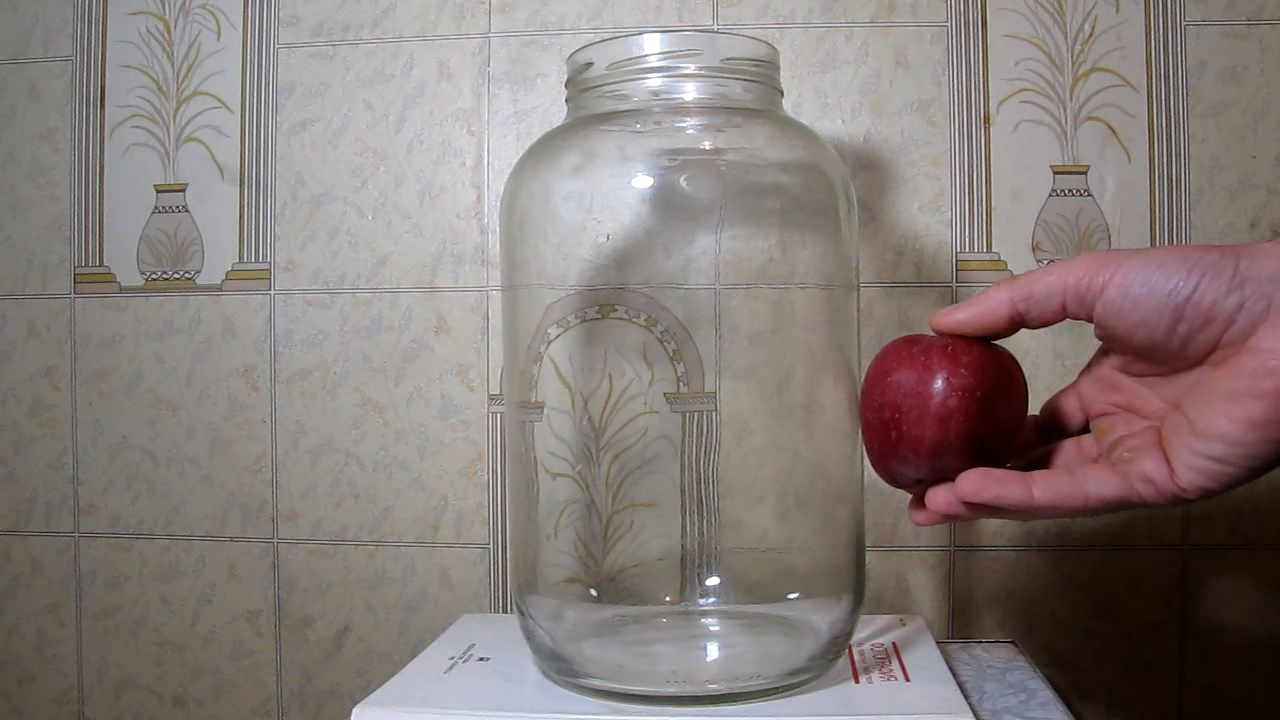
A Red Chief apple and ammonia |
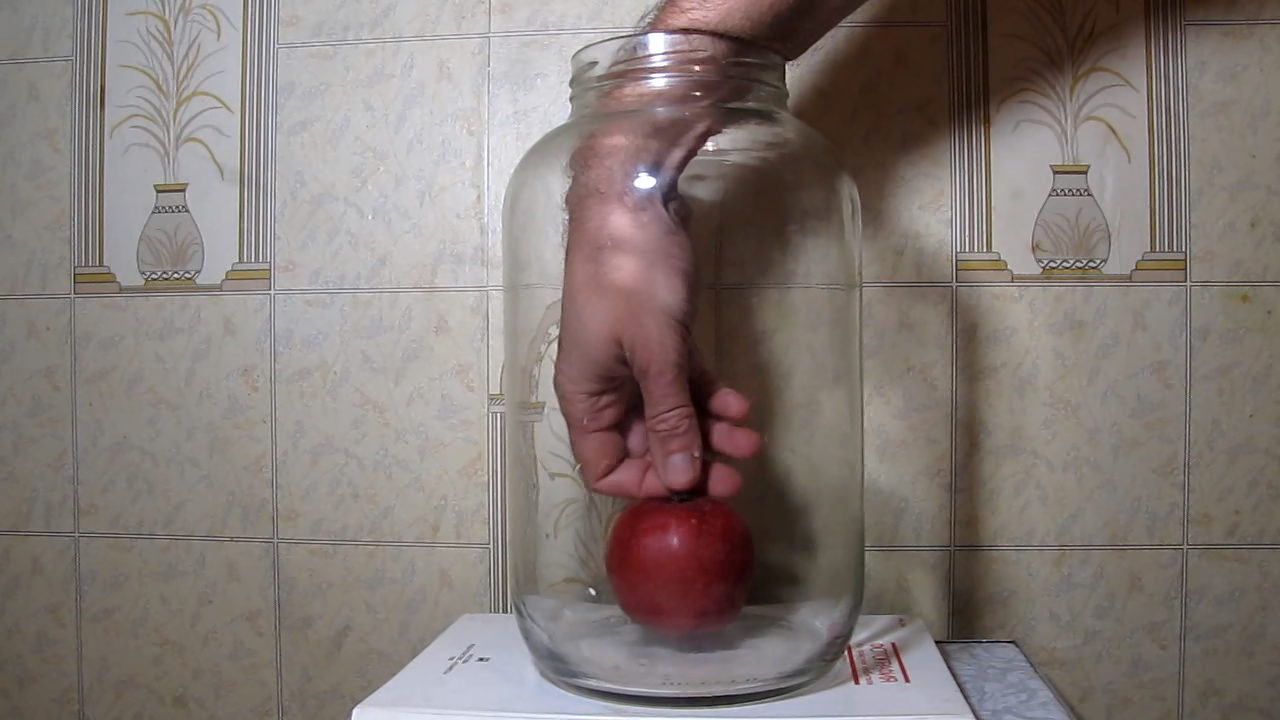
|

|

|

|

|
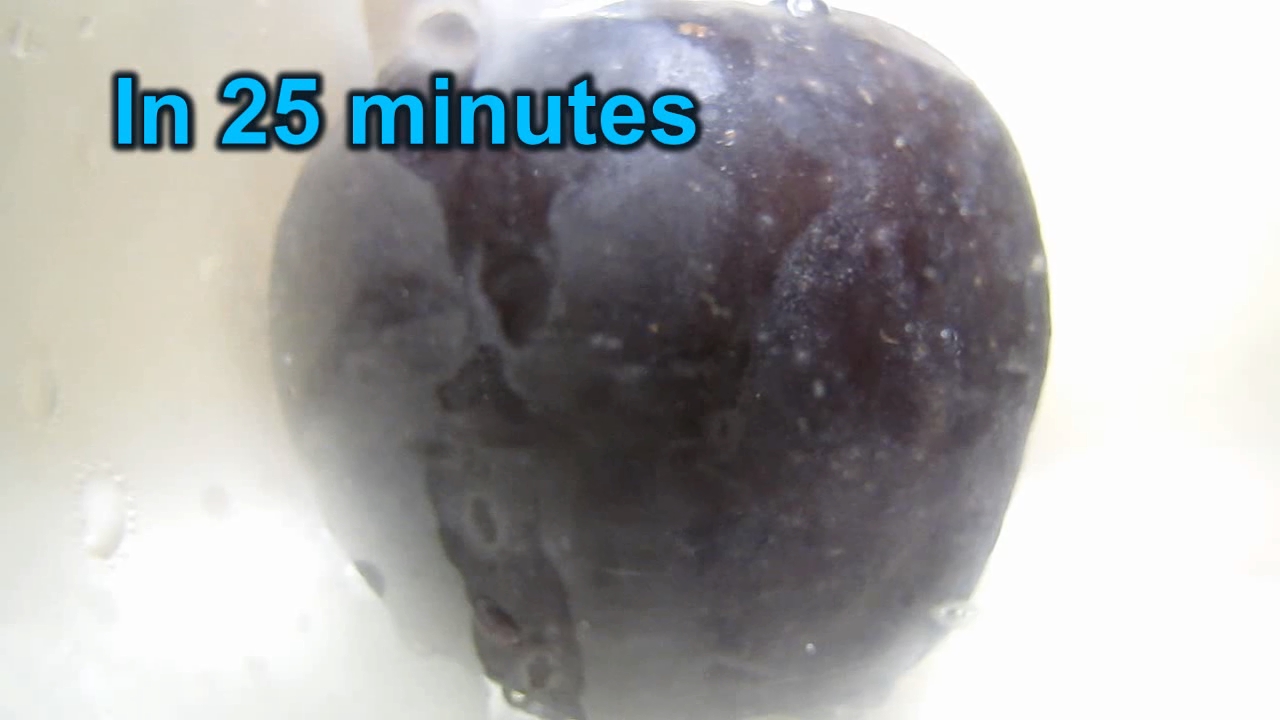
|
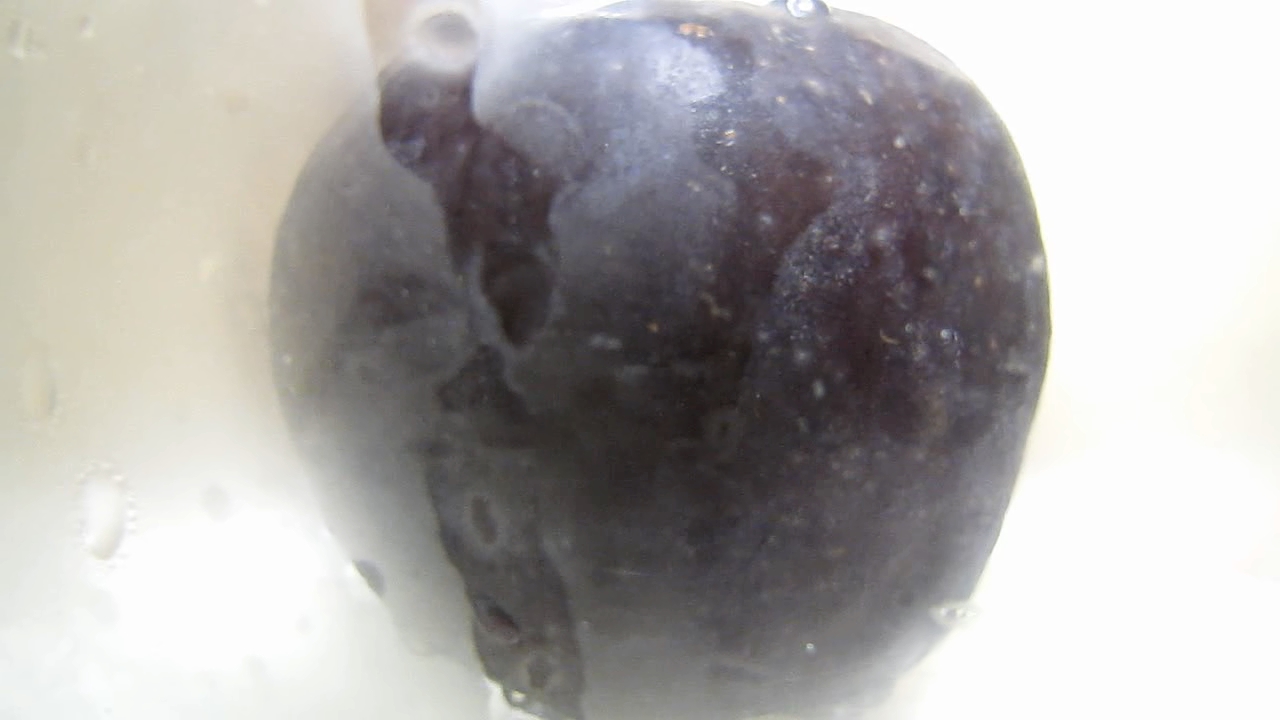
|
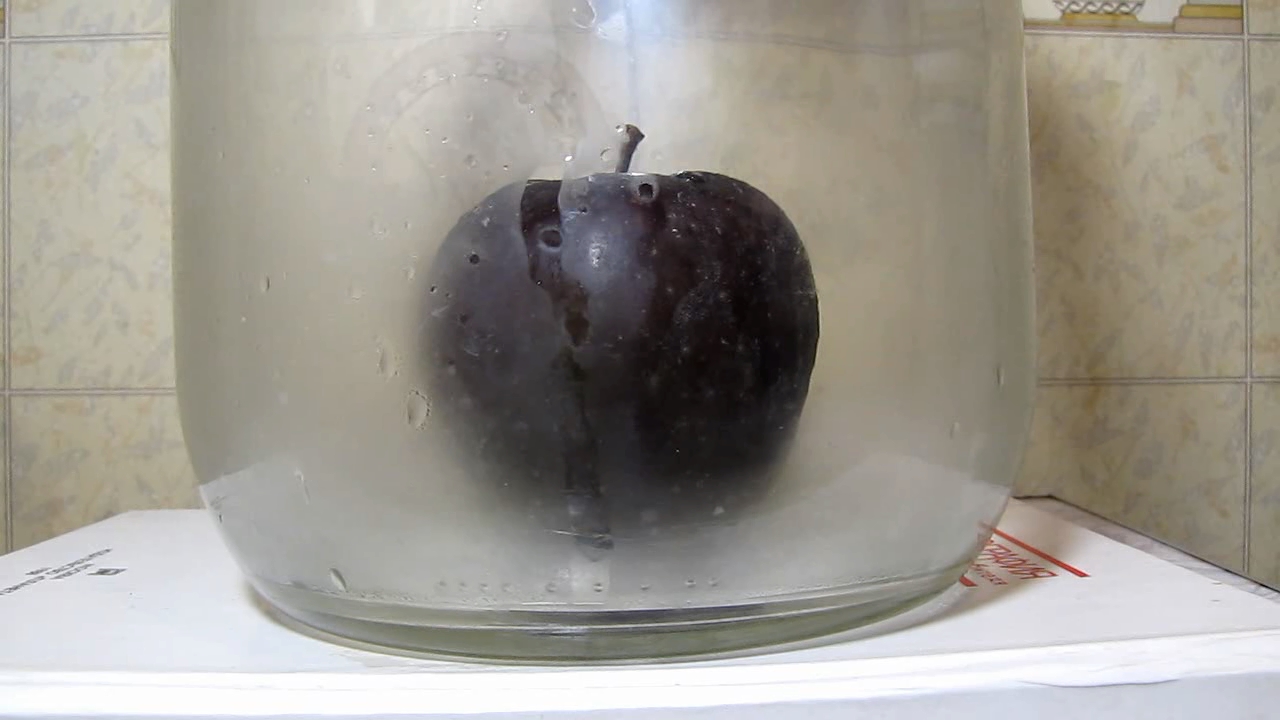
|
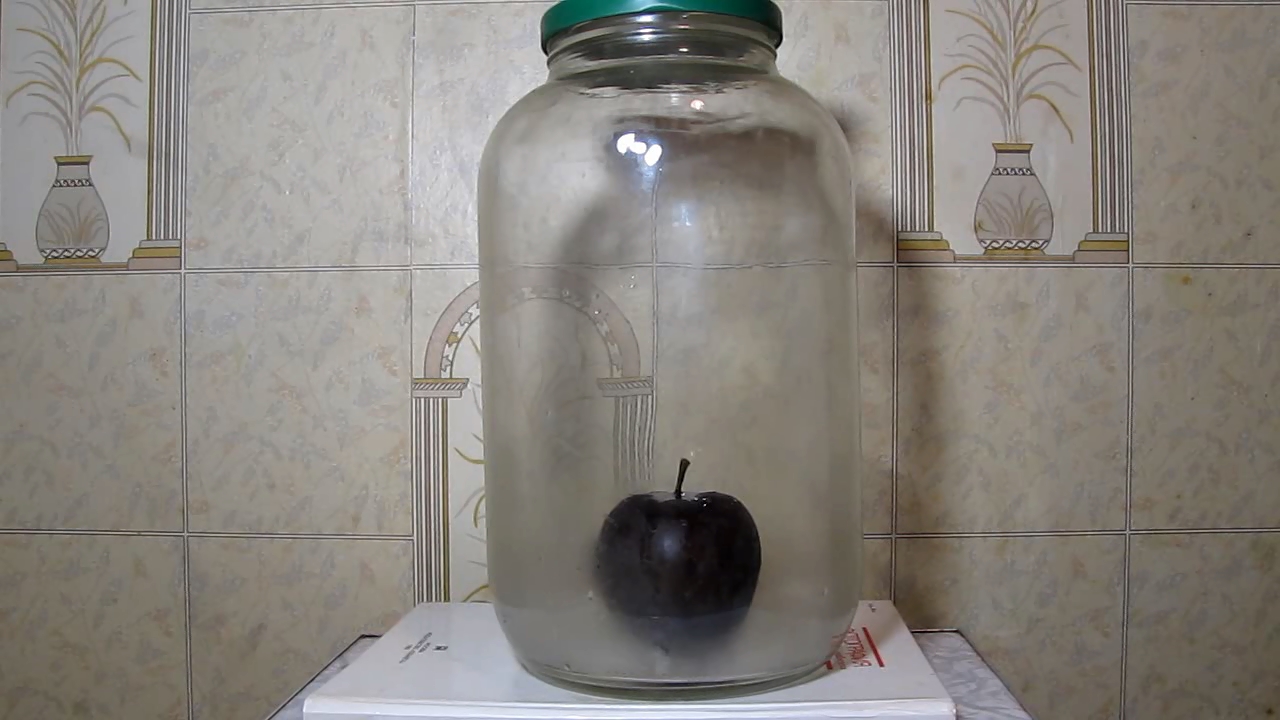
|
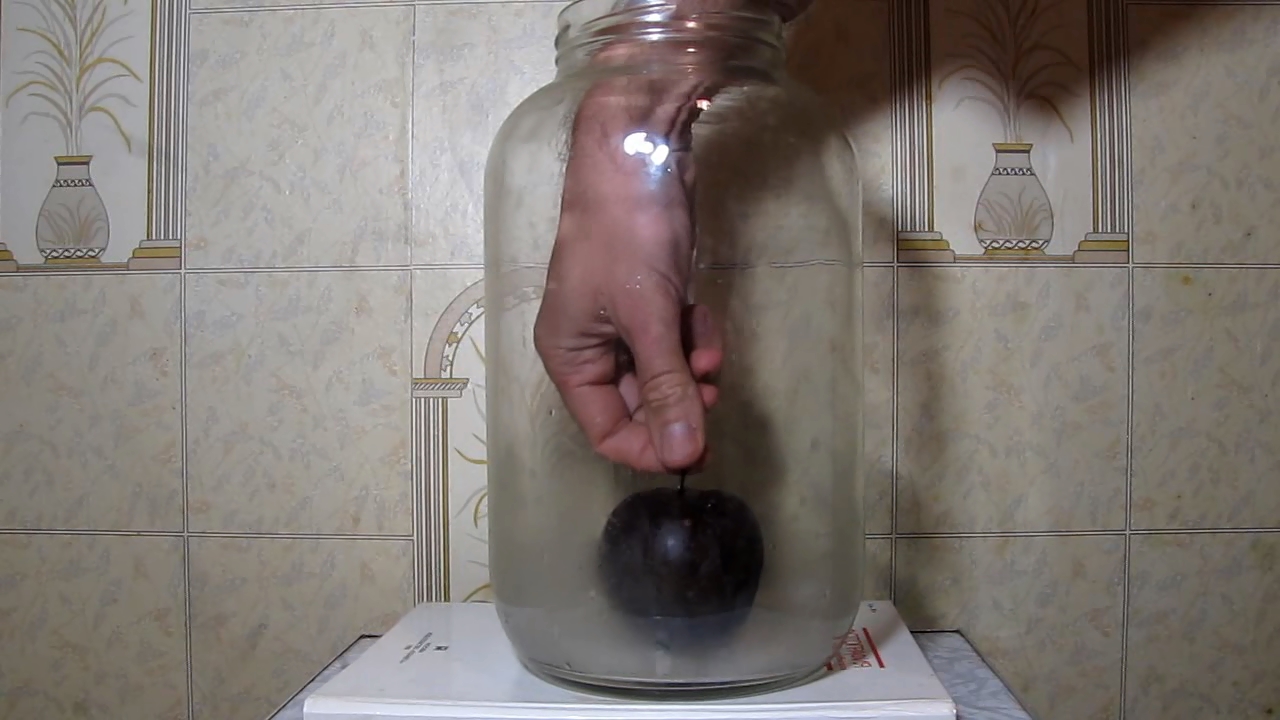
|
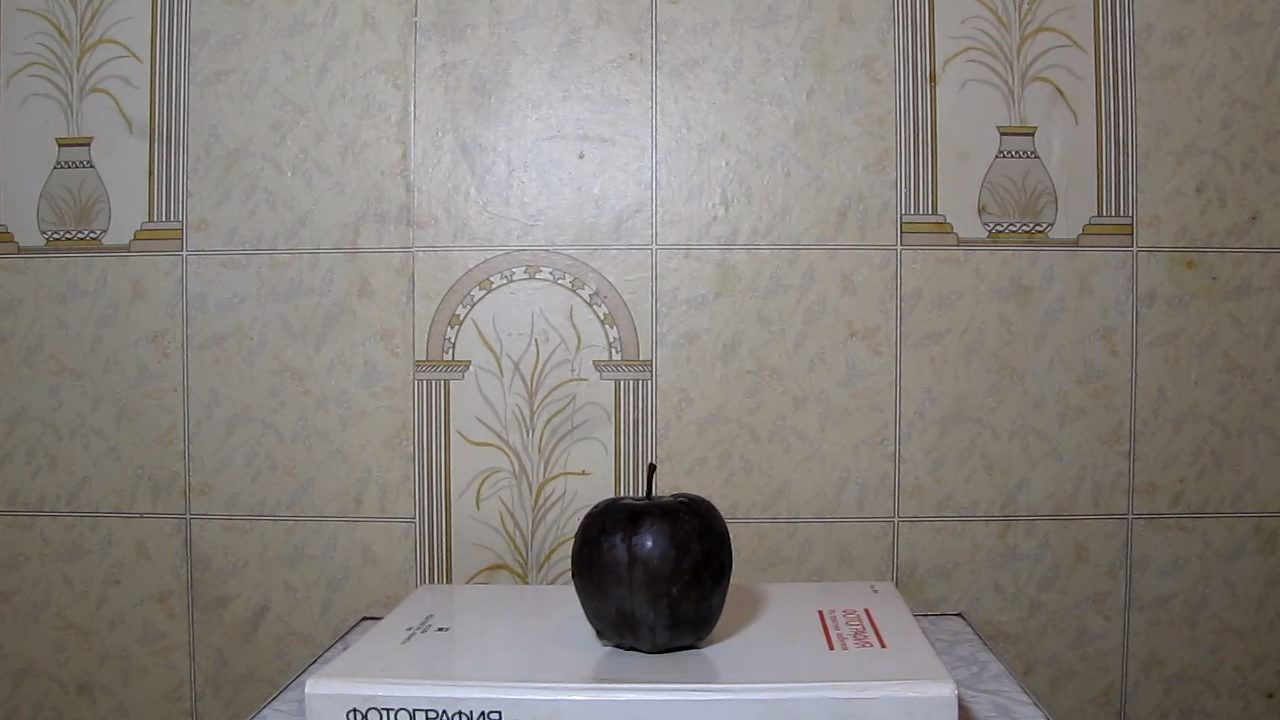
|
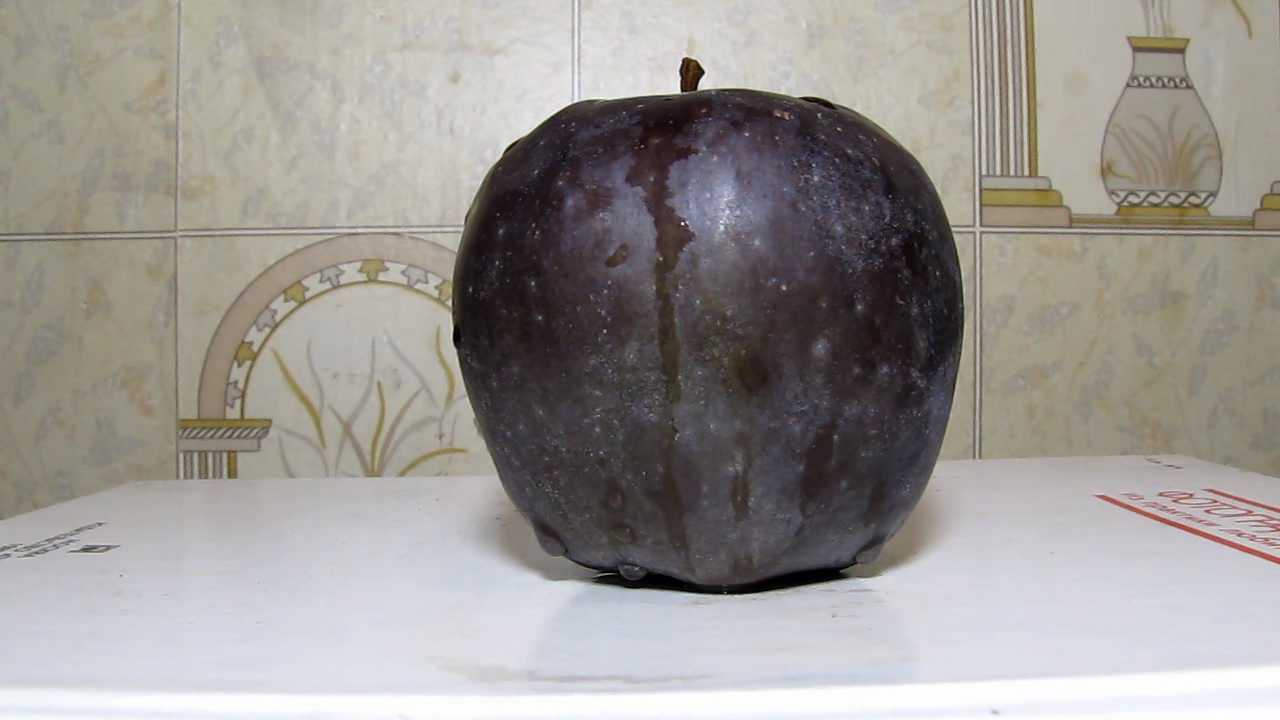
|
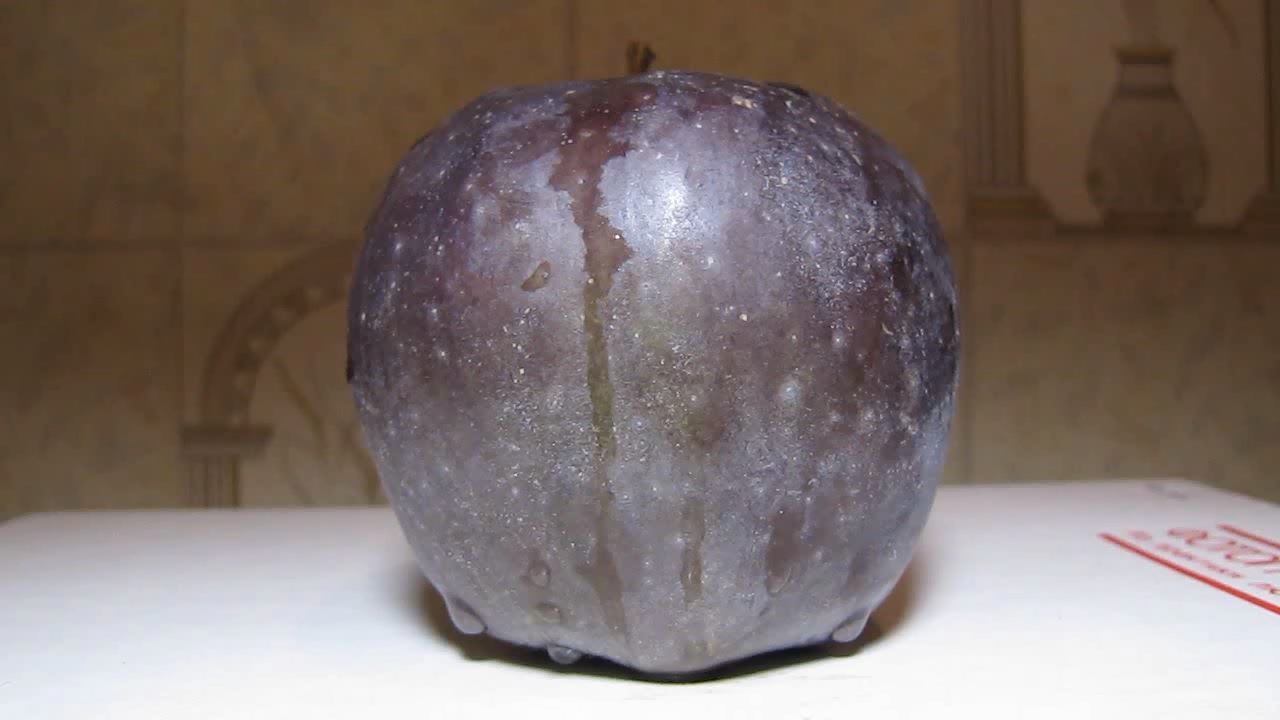
|
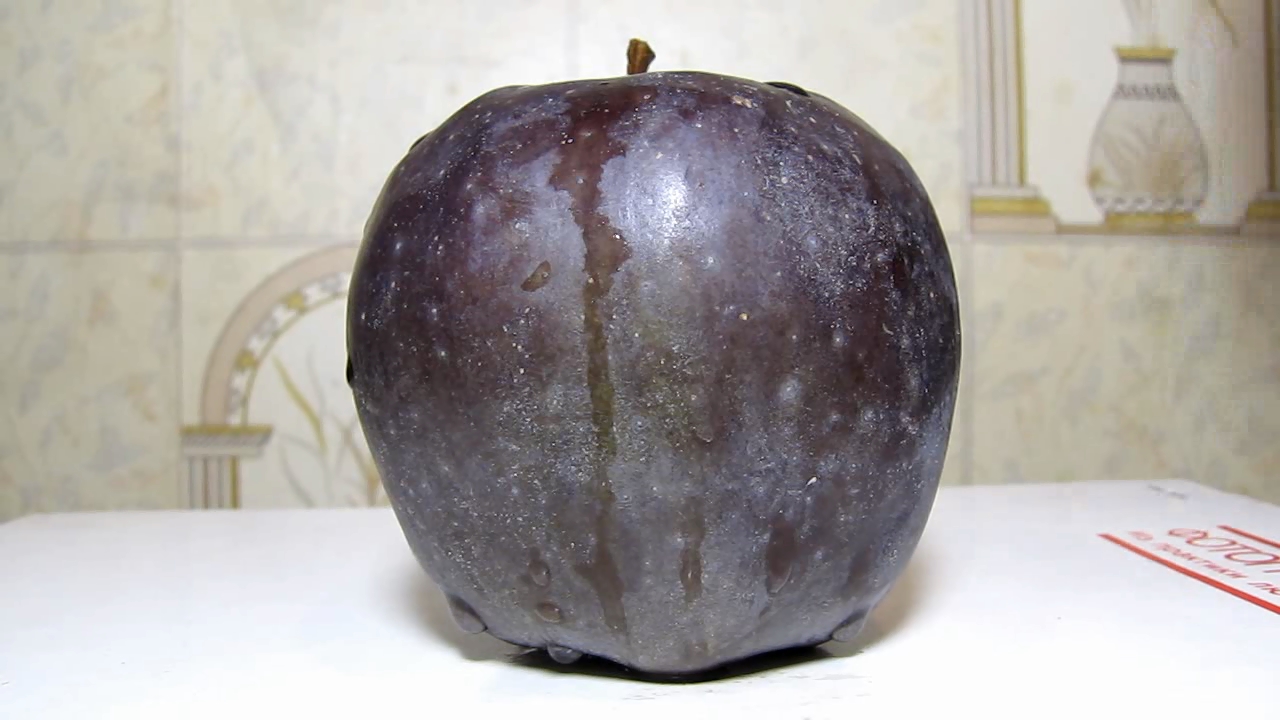
|
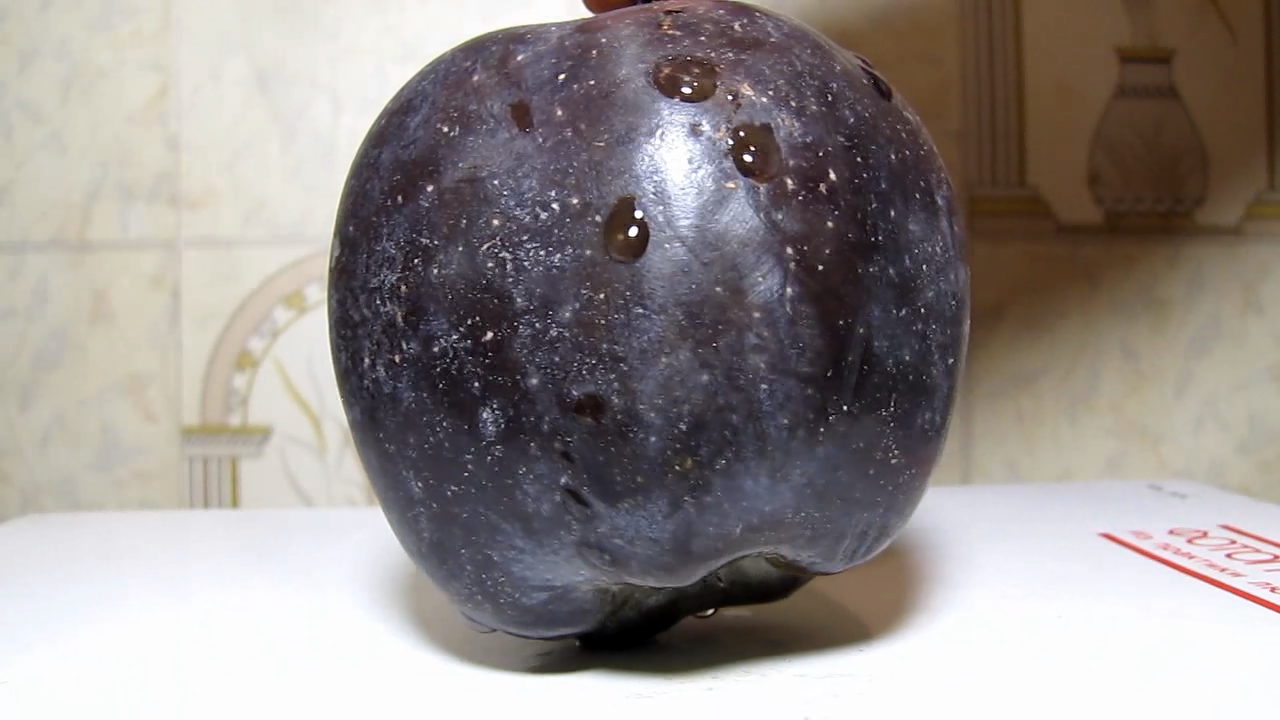
|
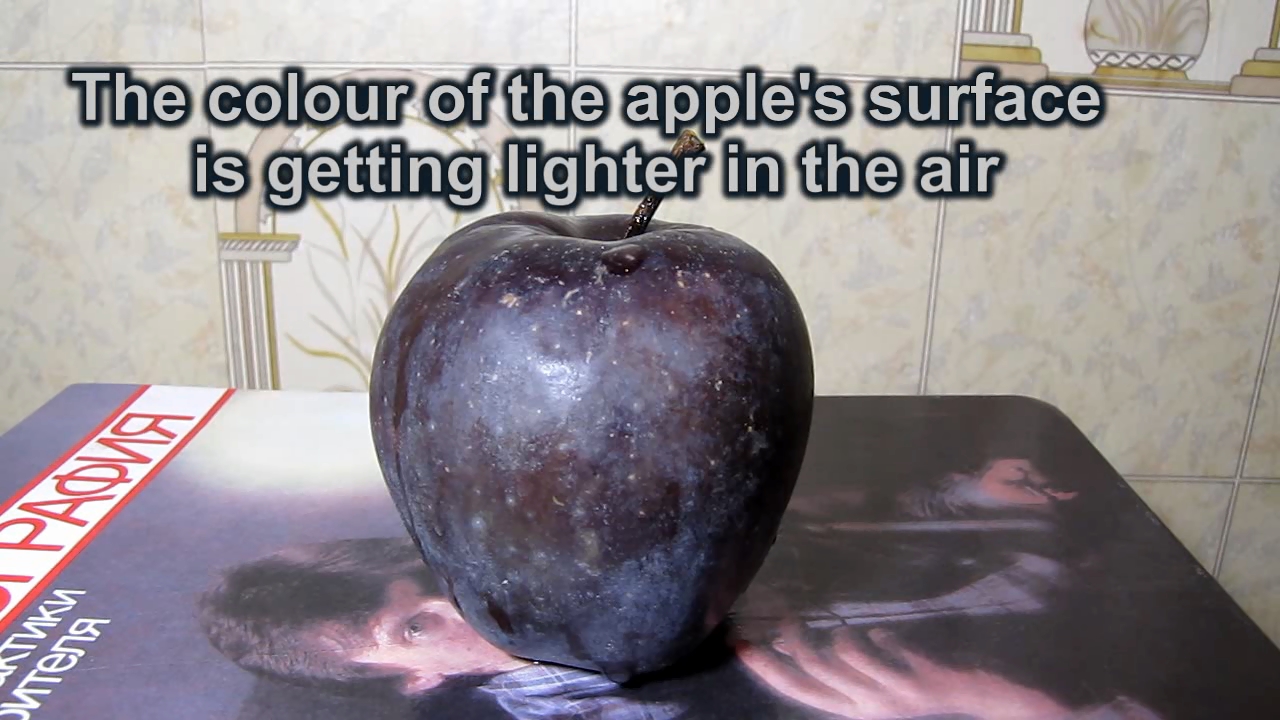
|
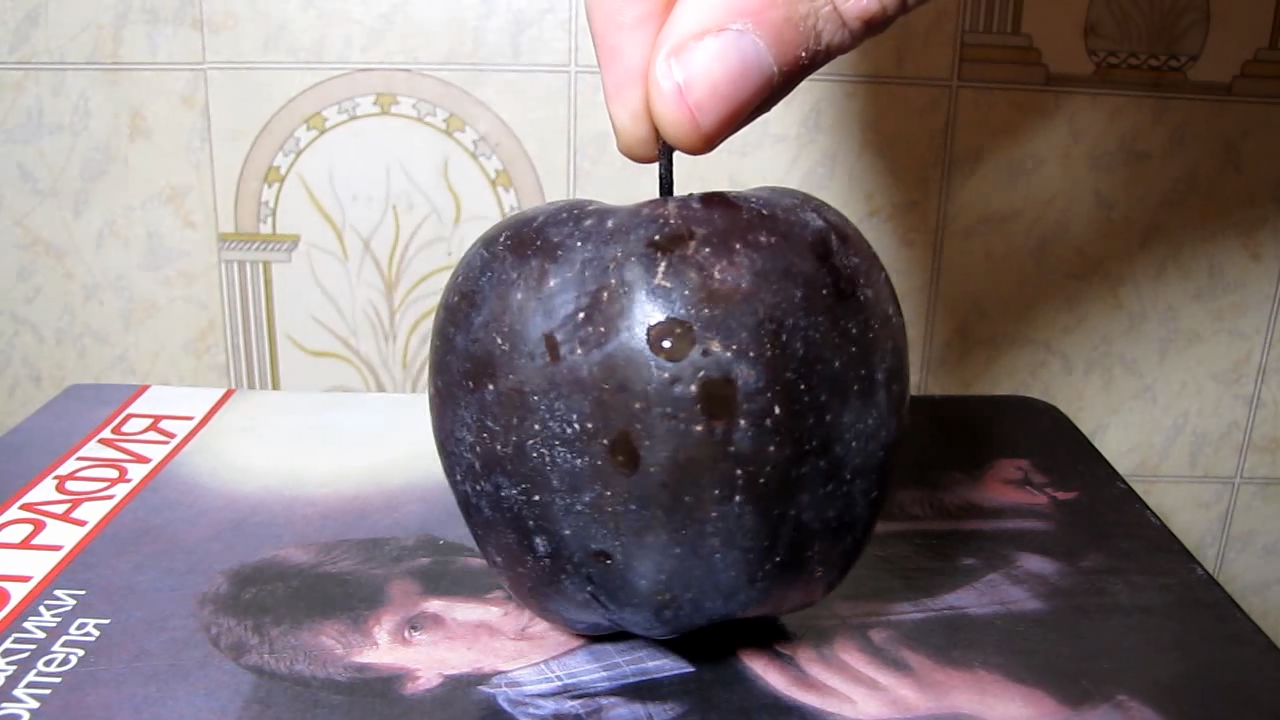
|
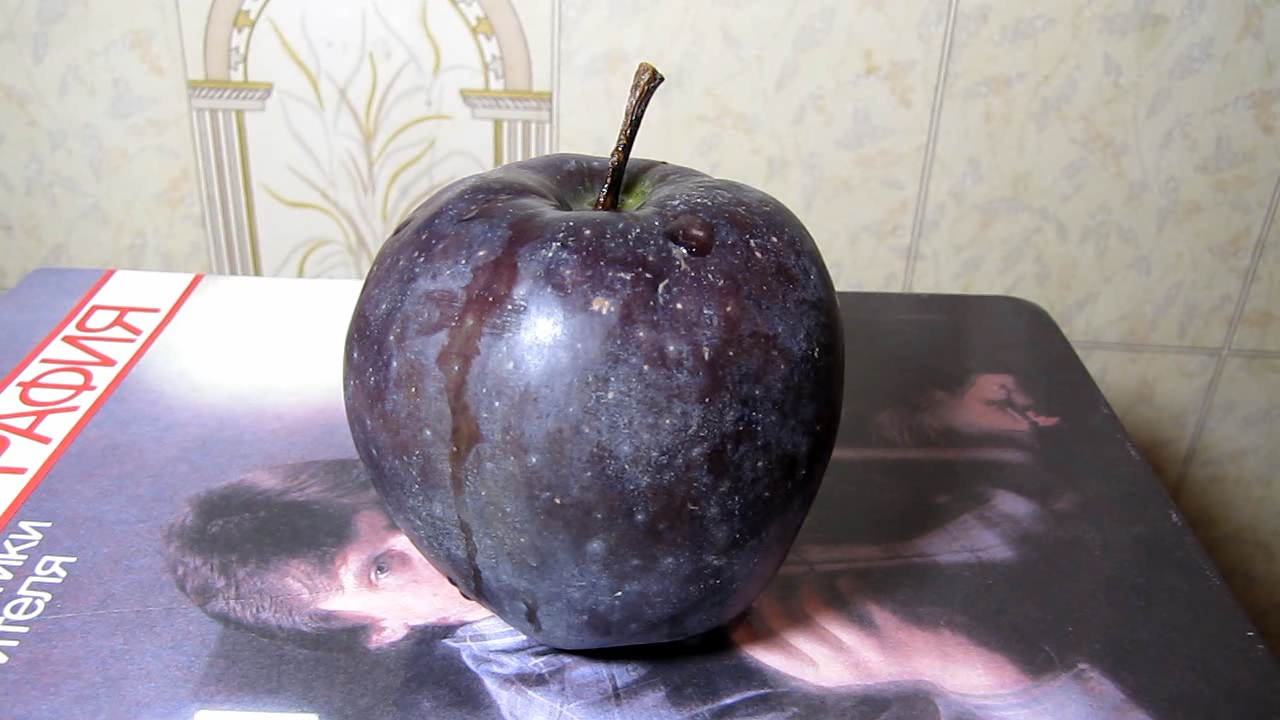
|

|
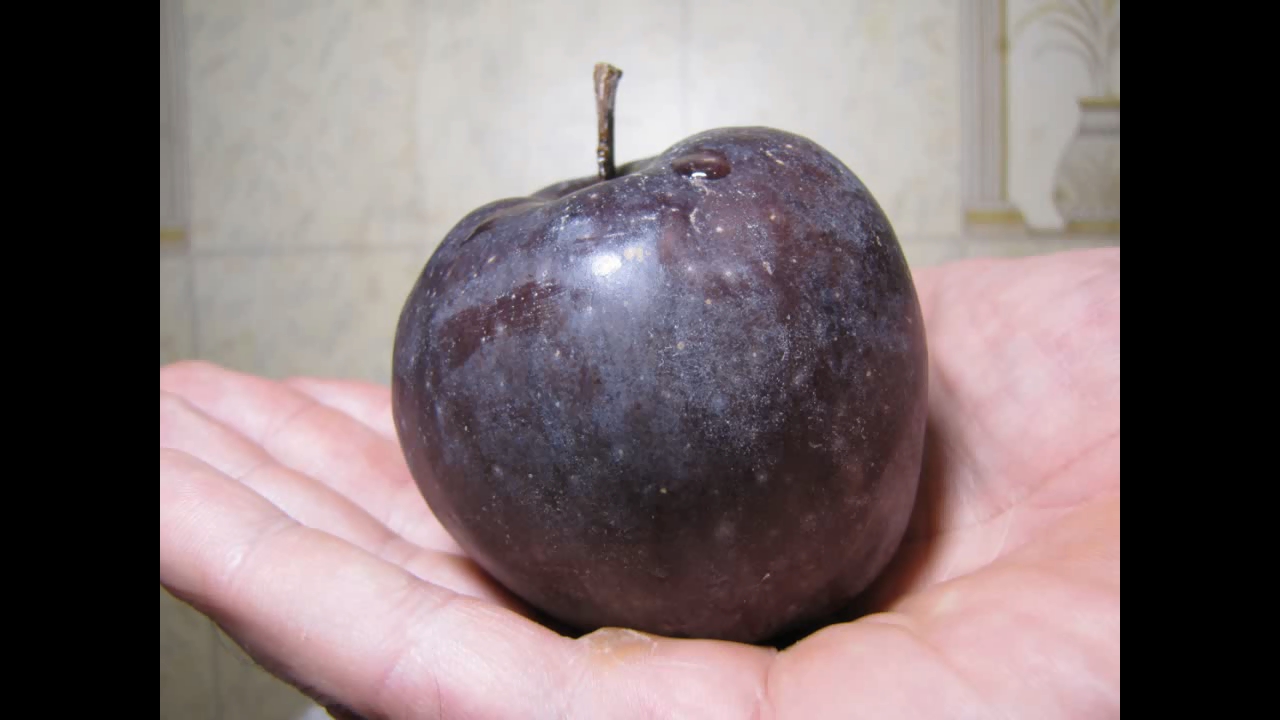
|
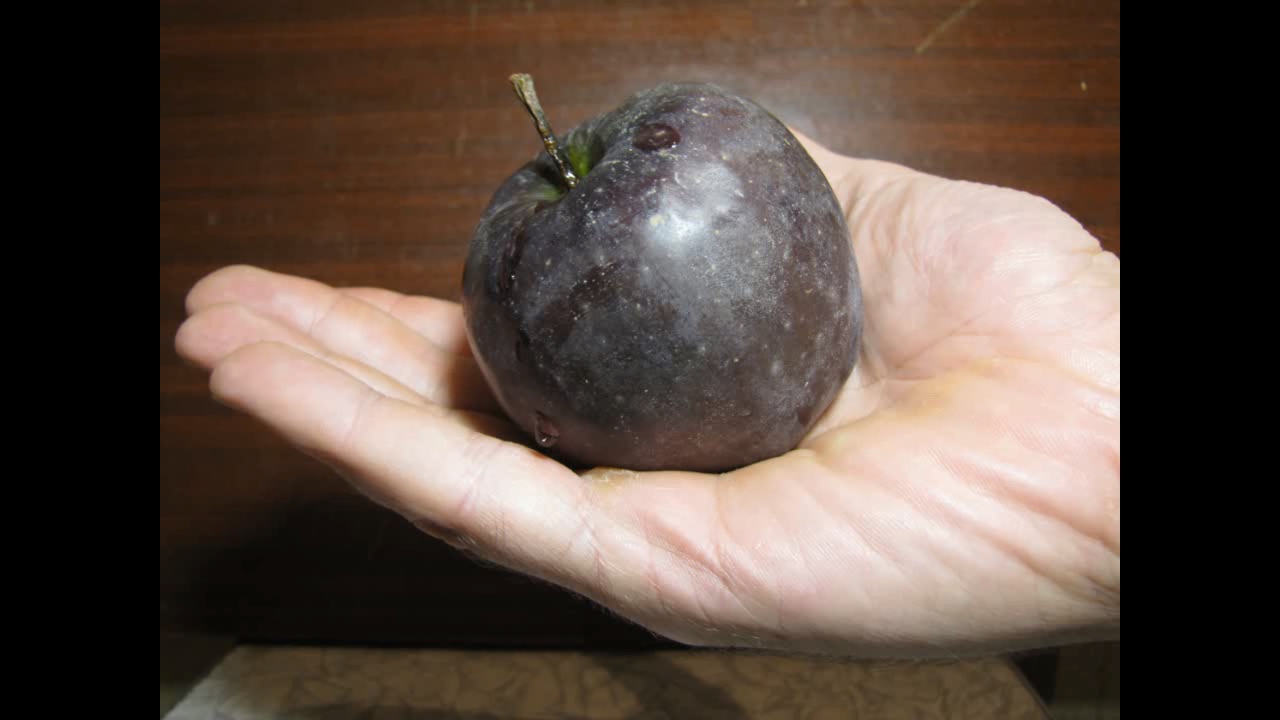
|
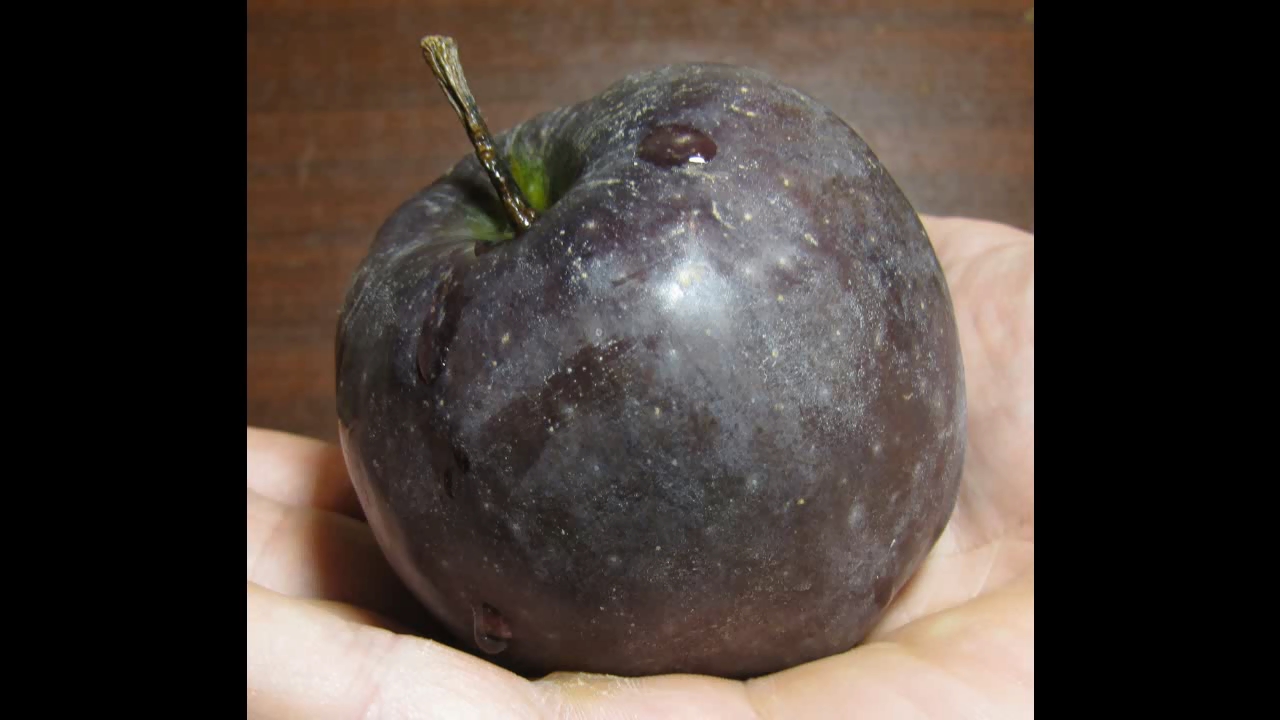
|

|
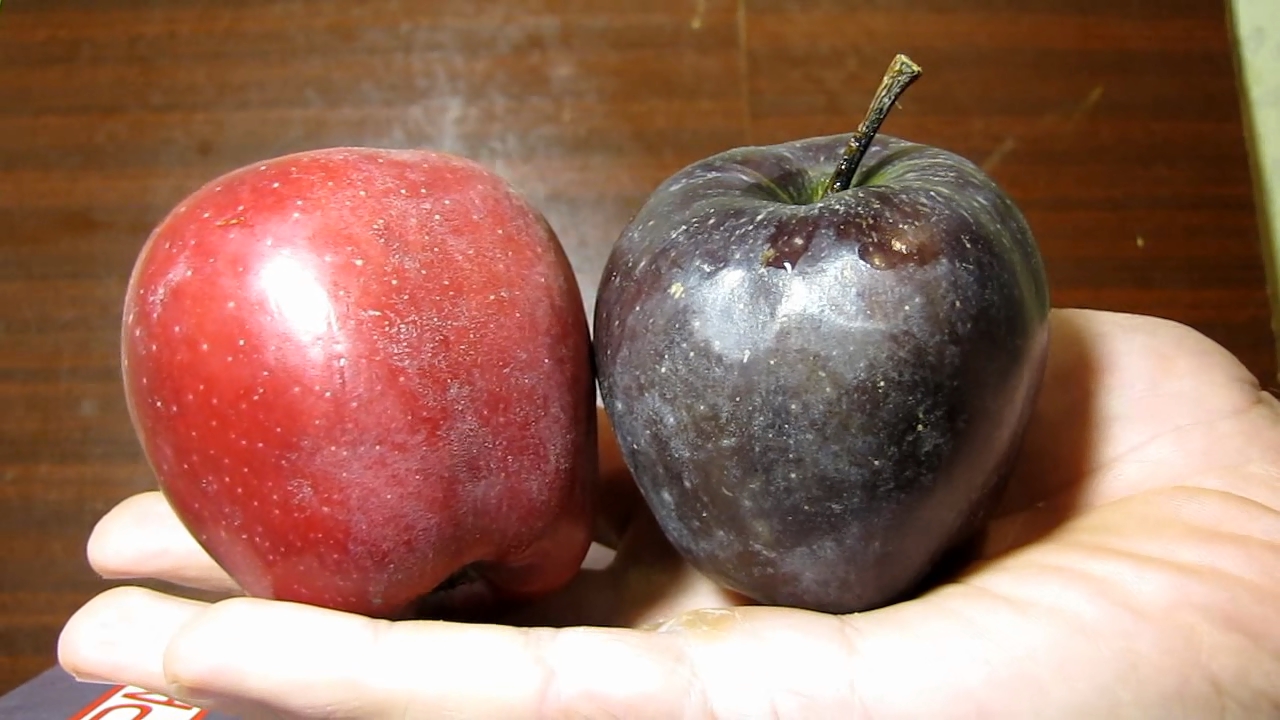
|
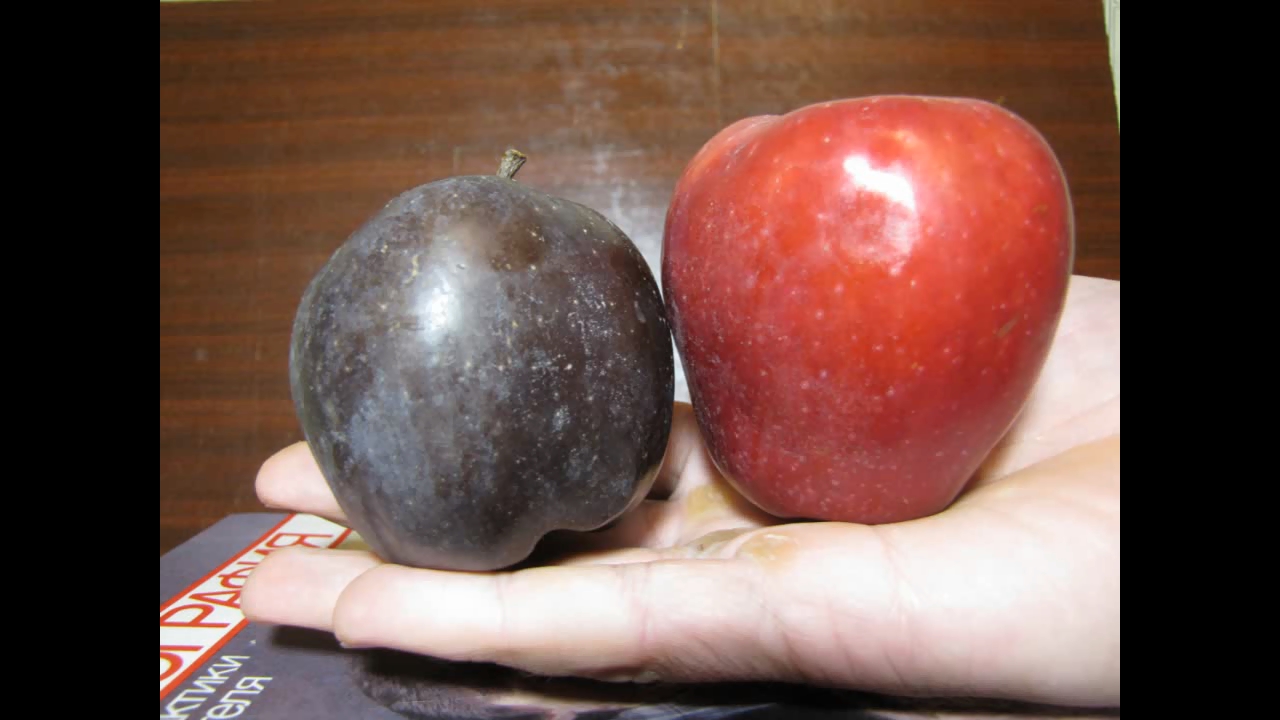
|
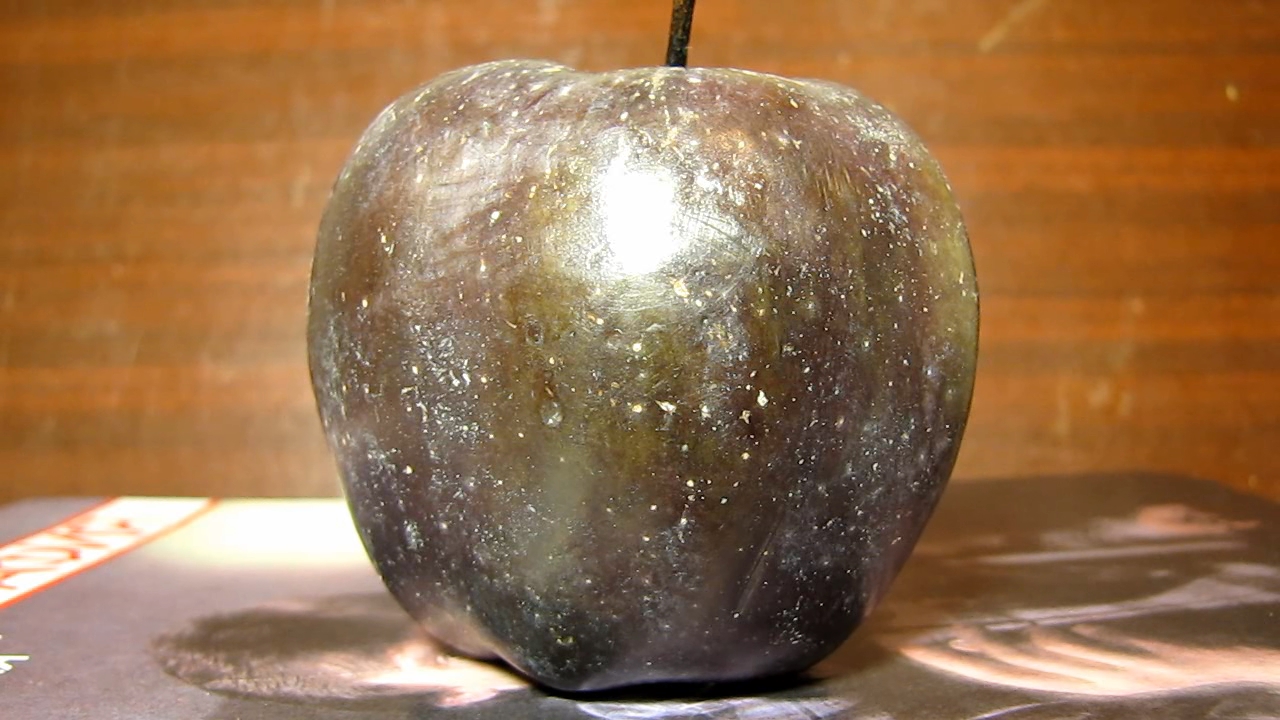
|

|
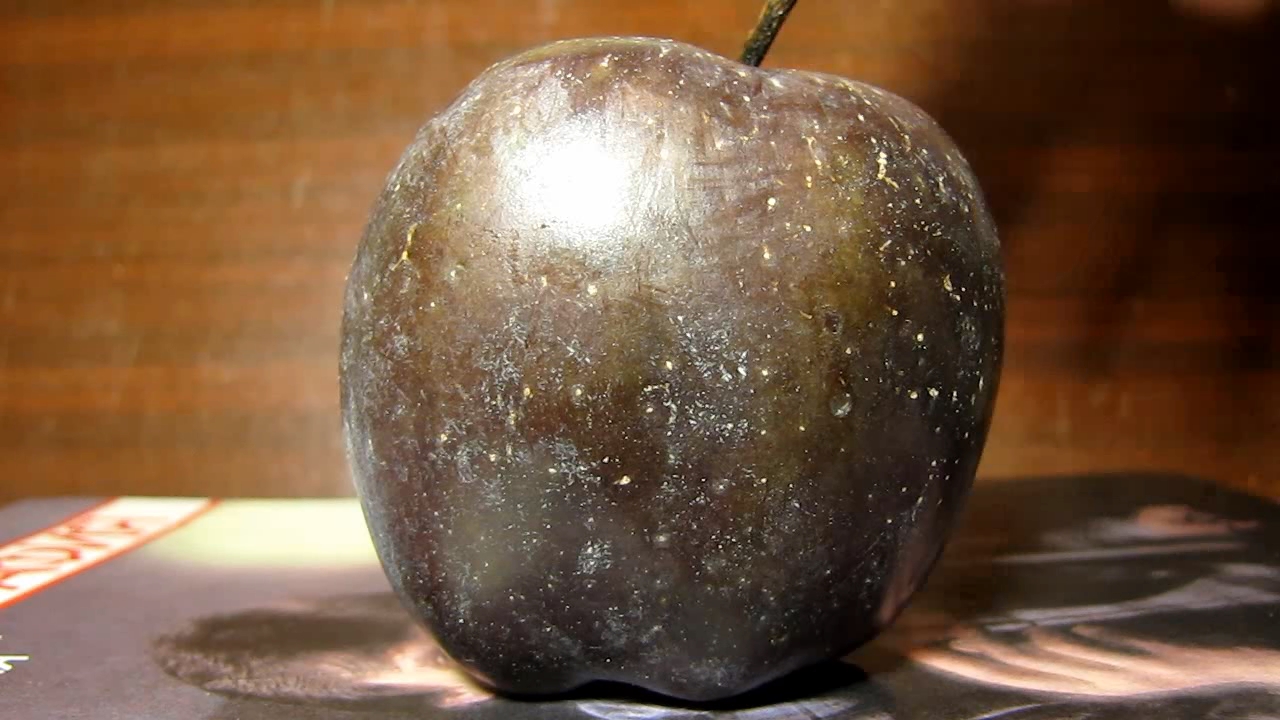
|
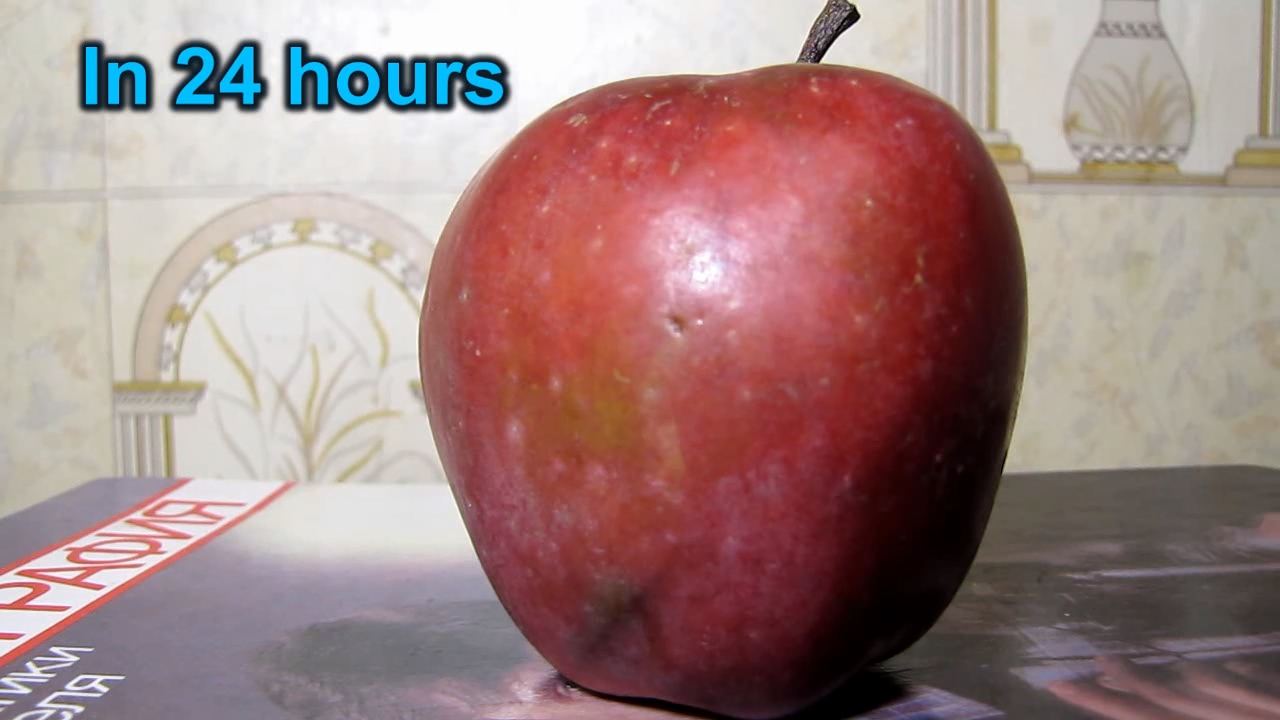
|
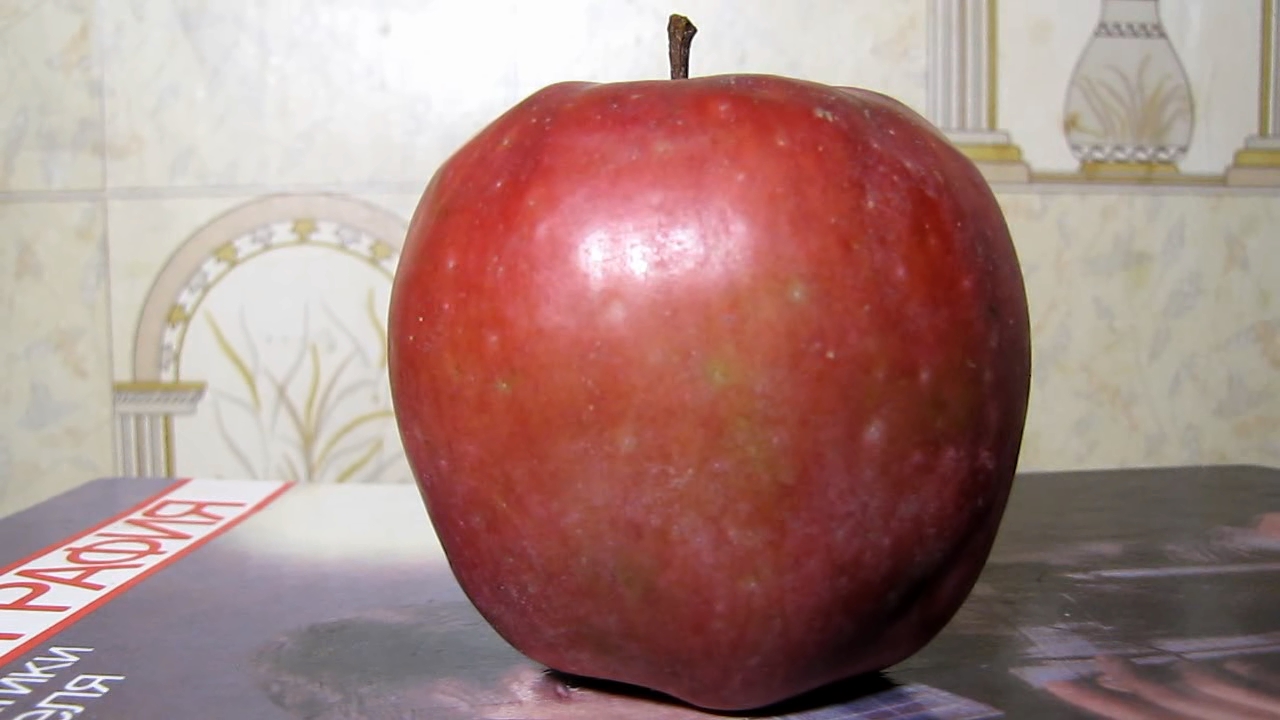
|
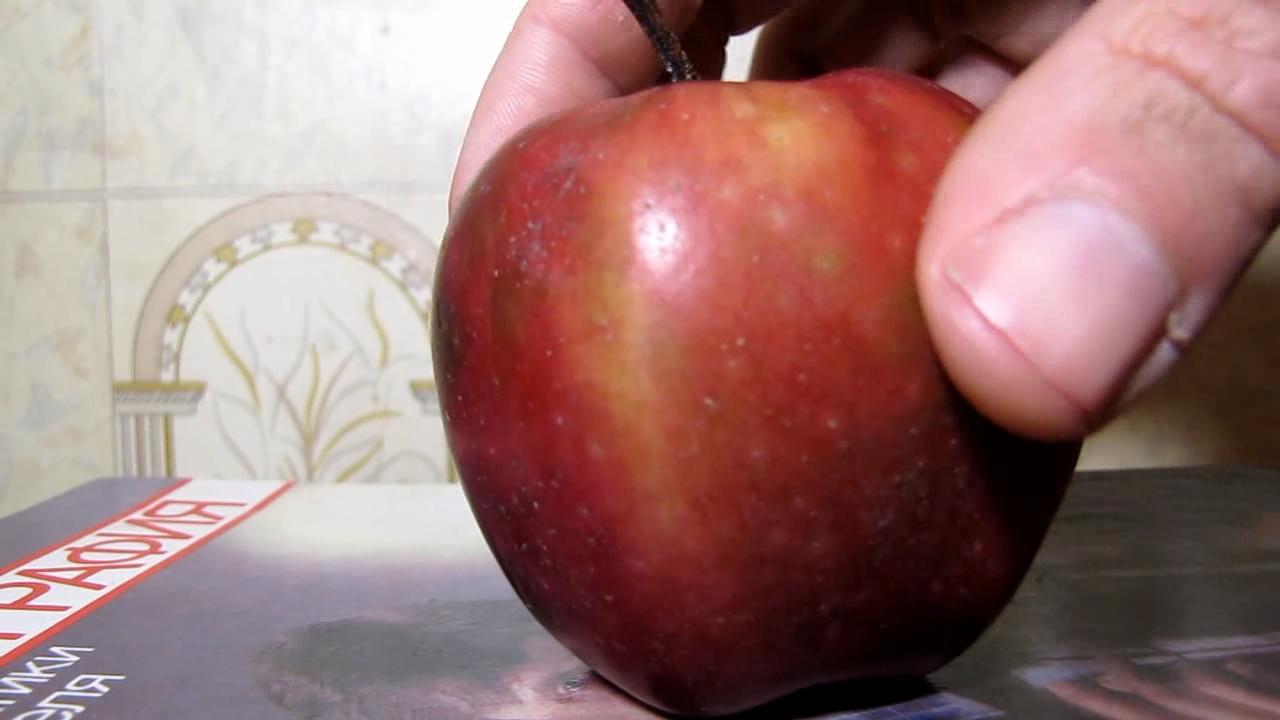
|

|
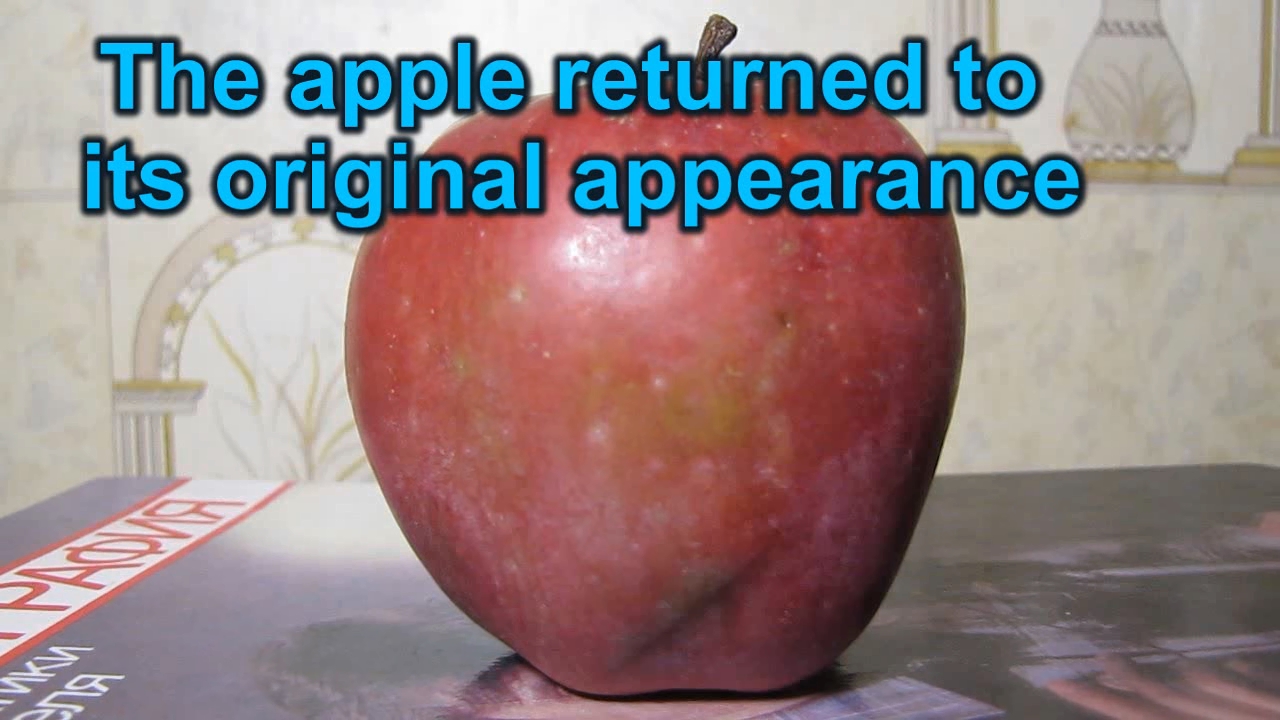
|
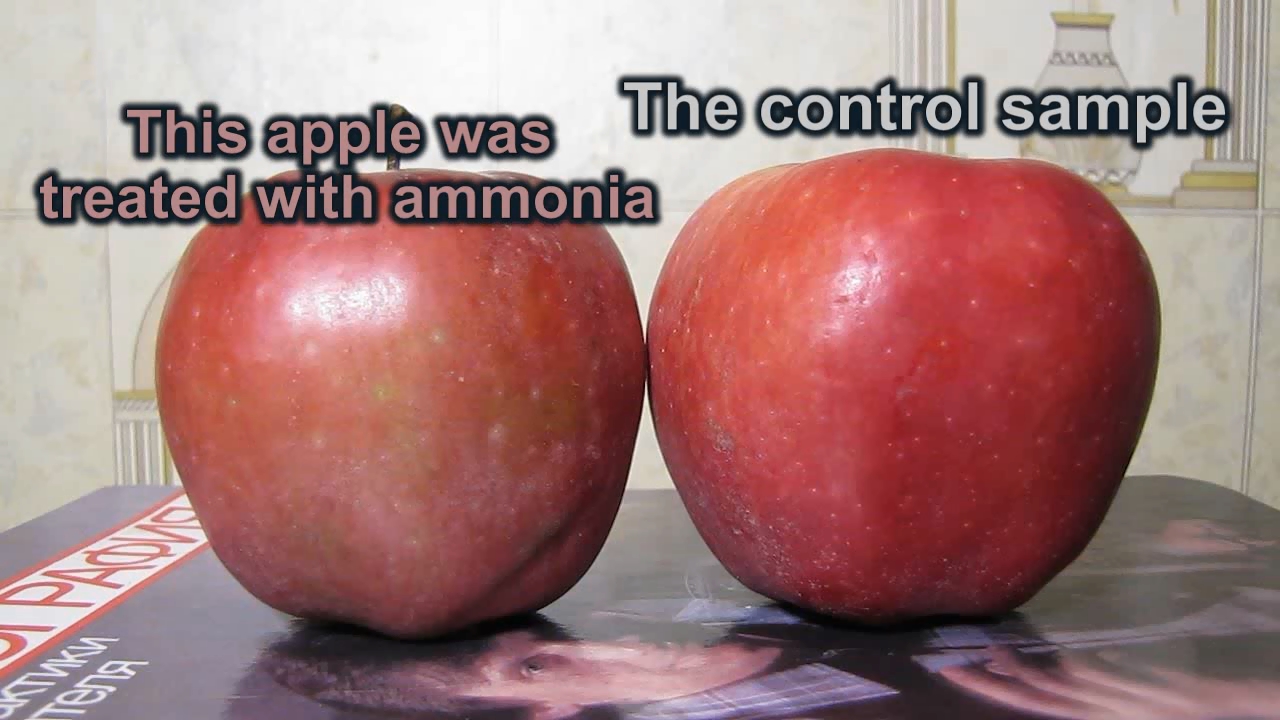
|

|
|
Aster amellus and ammonia - pt.21
This wonderful perennial herbaceous plant is grown in our gardens and flower beds, but it is also found growing wild (in the steppes and forest steppes). The flowers are lilac or purple, small. They resemble chamomile and are quite cute. But the plant is known not because of its beautiful flowers or pleasant aroma. What I remember about this plant is its excellent frost resistance. It blooms from mid-summer to late autumn. We call this plant “the frost”. Why? Often, the plant continues to bloom when frost begins. If it is snowing, this is not a problem: flowering continues (however, the snow should melt quickly). I looked up the scientific name of this biological species, and it turns out - Aster amellus, the European Michaelmas daisy (from now in the text - “aster”). 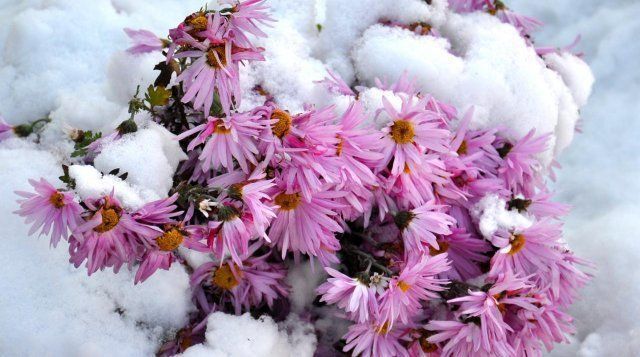 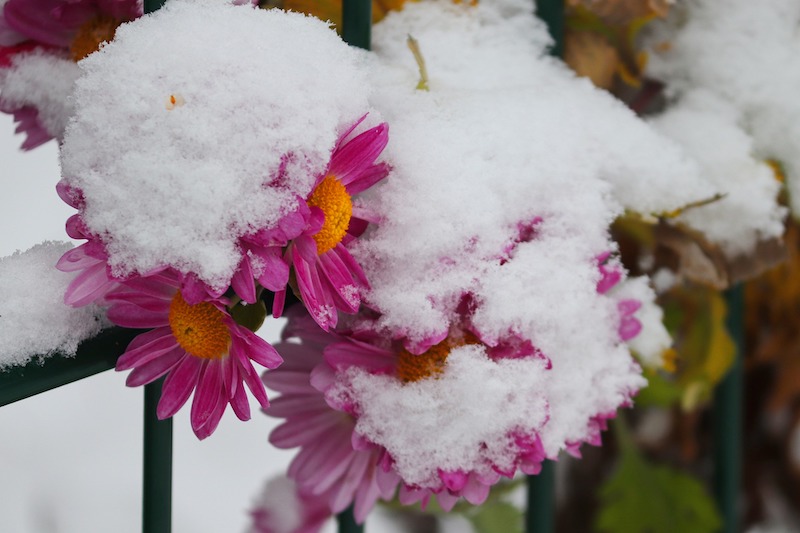   Snow on Aster  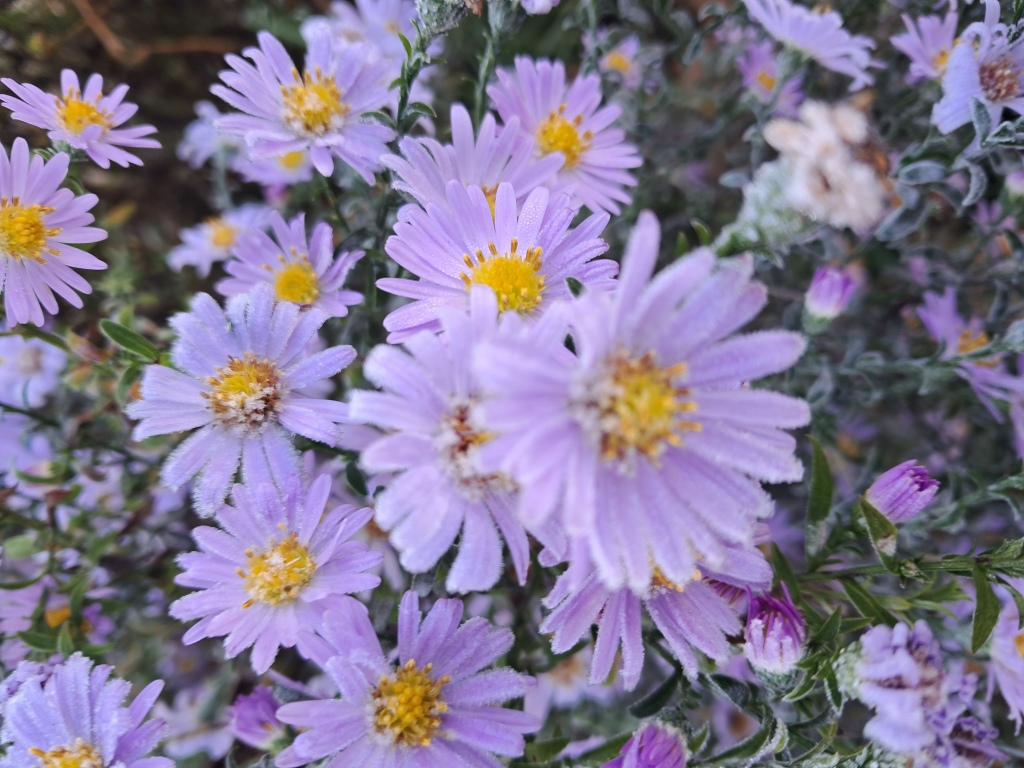 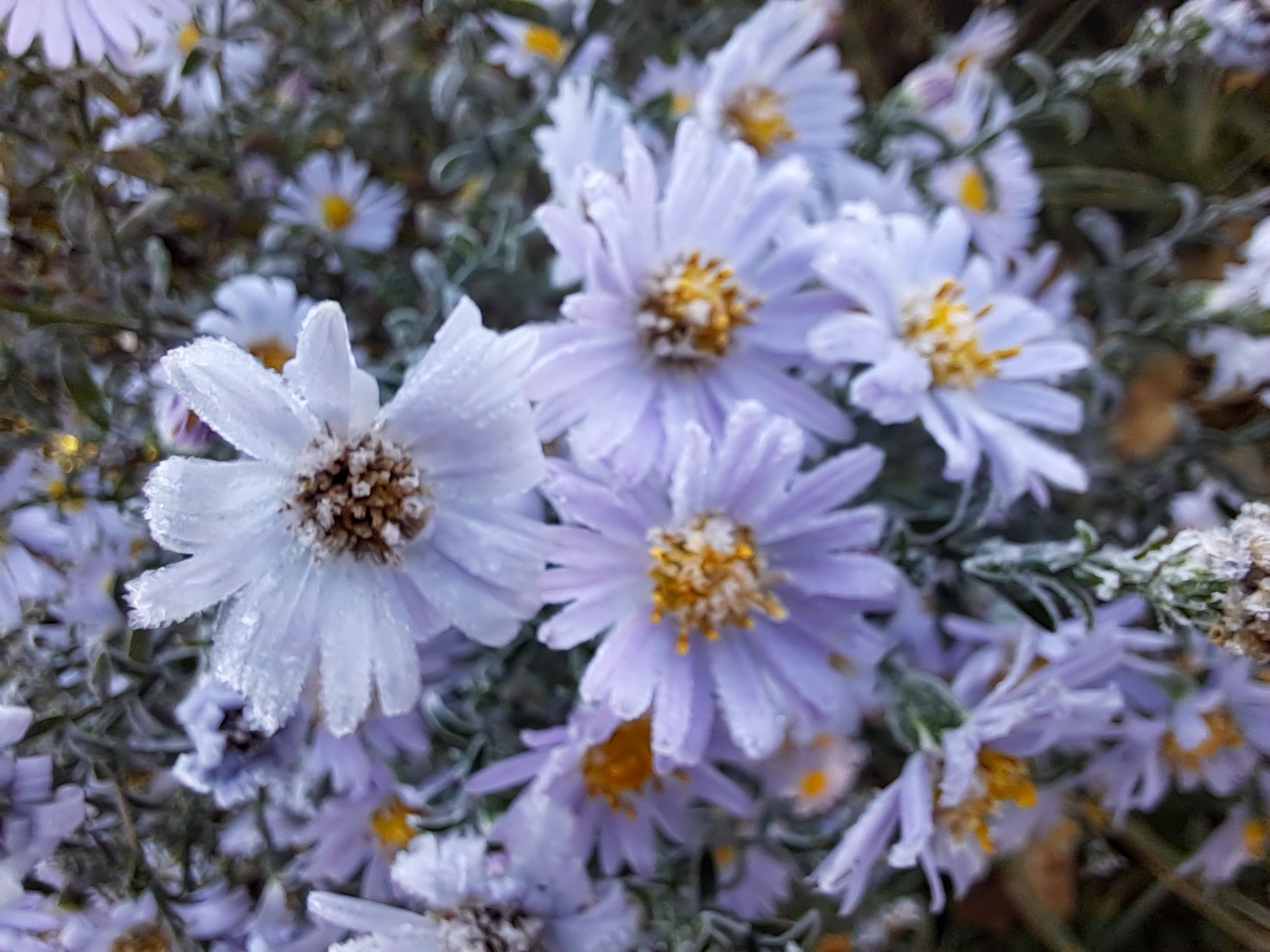 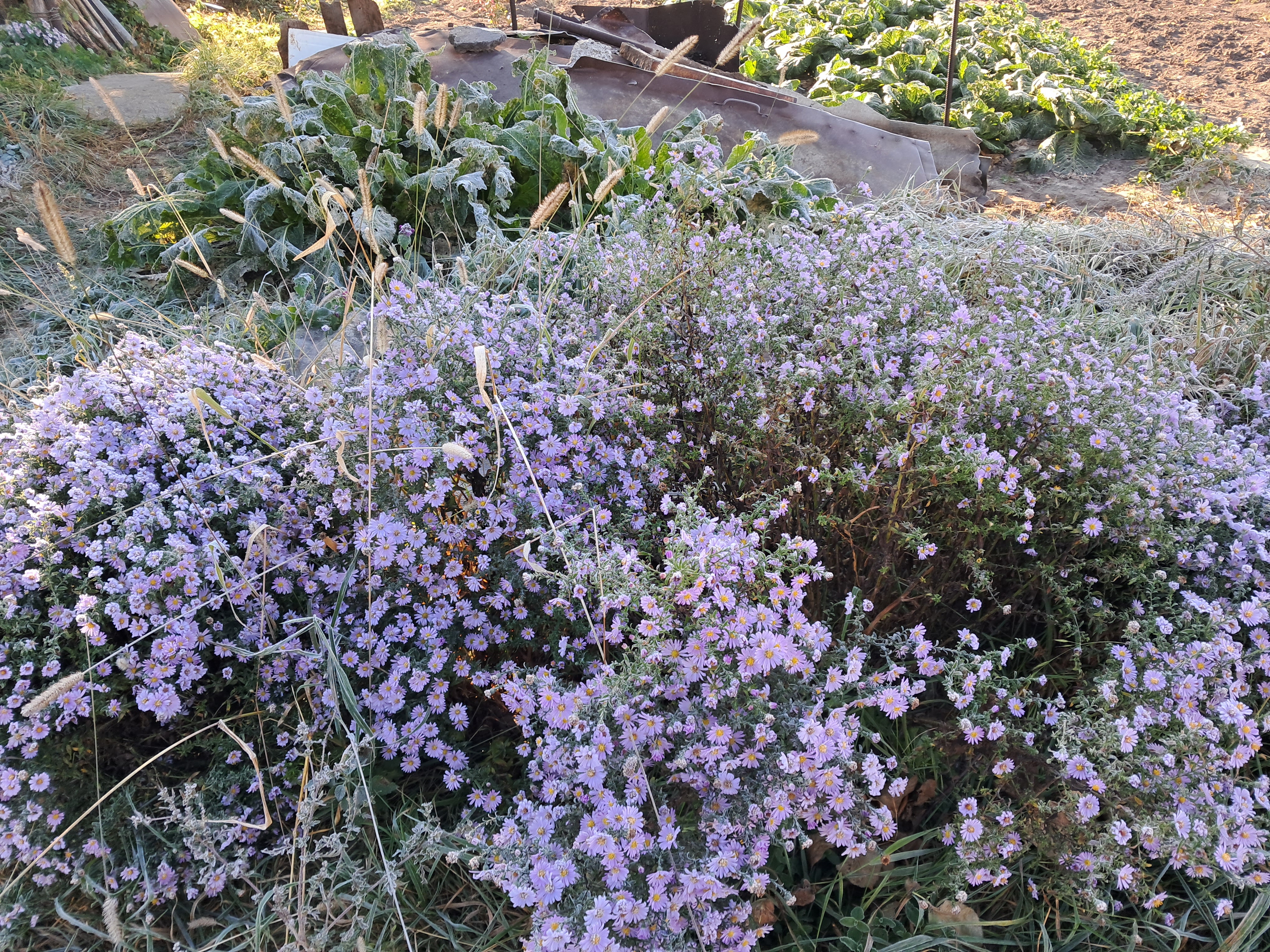 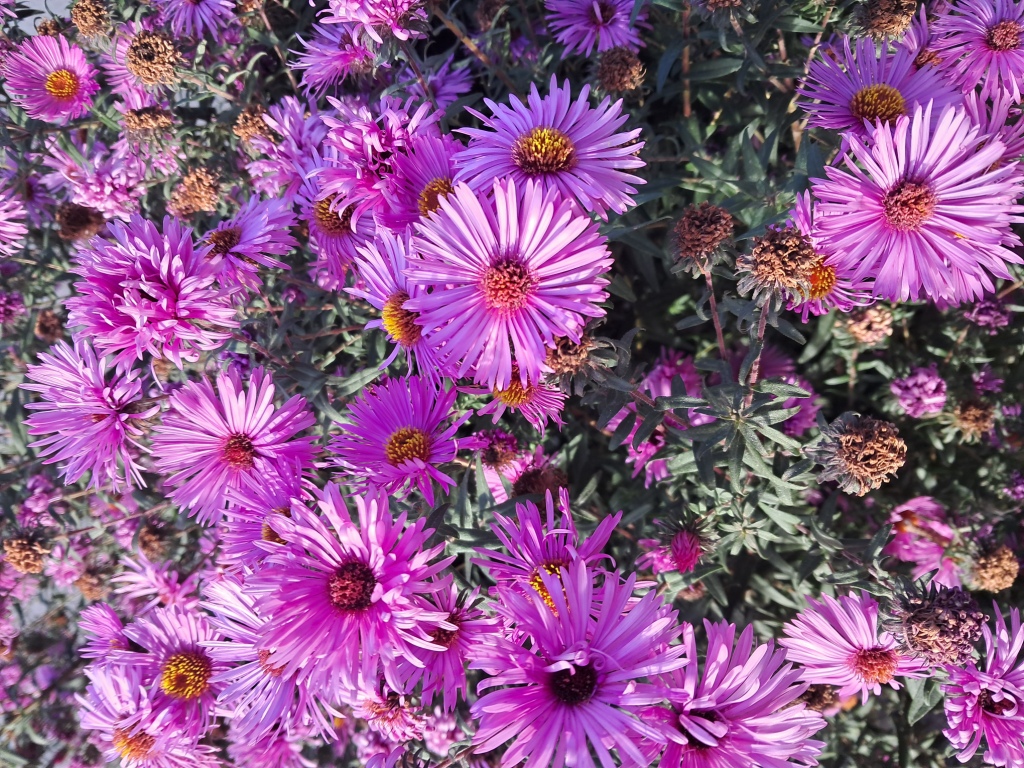 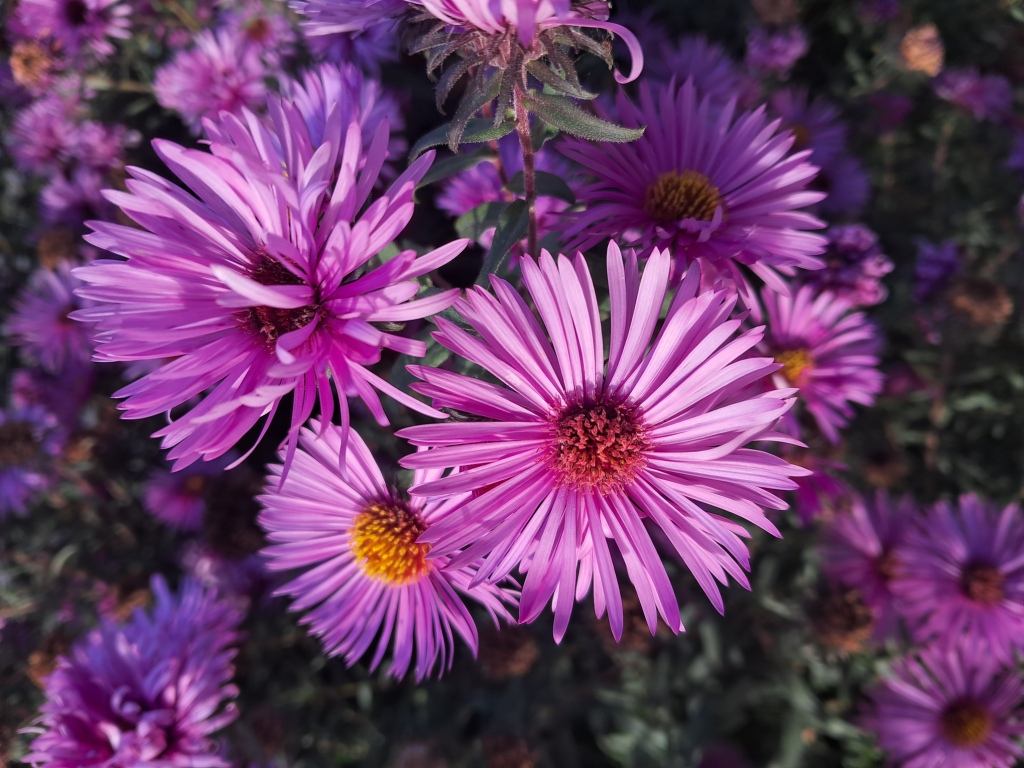 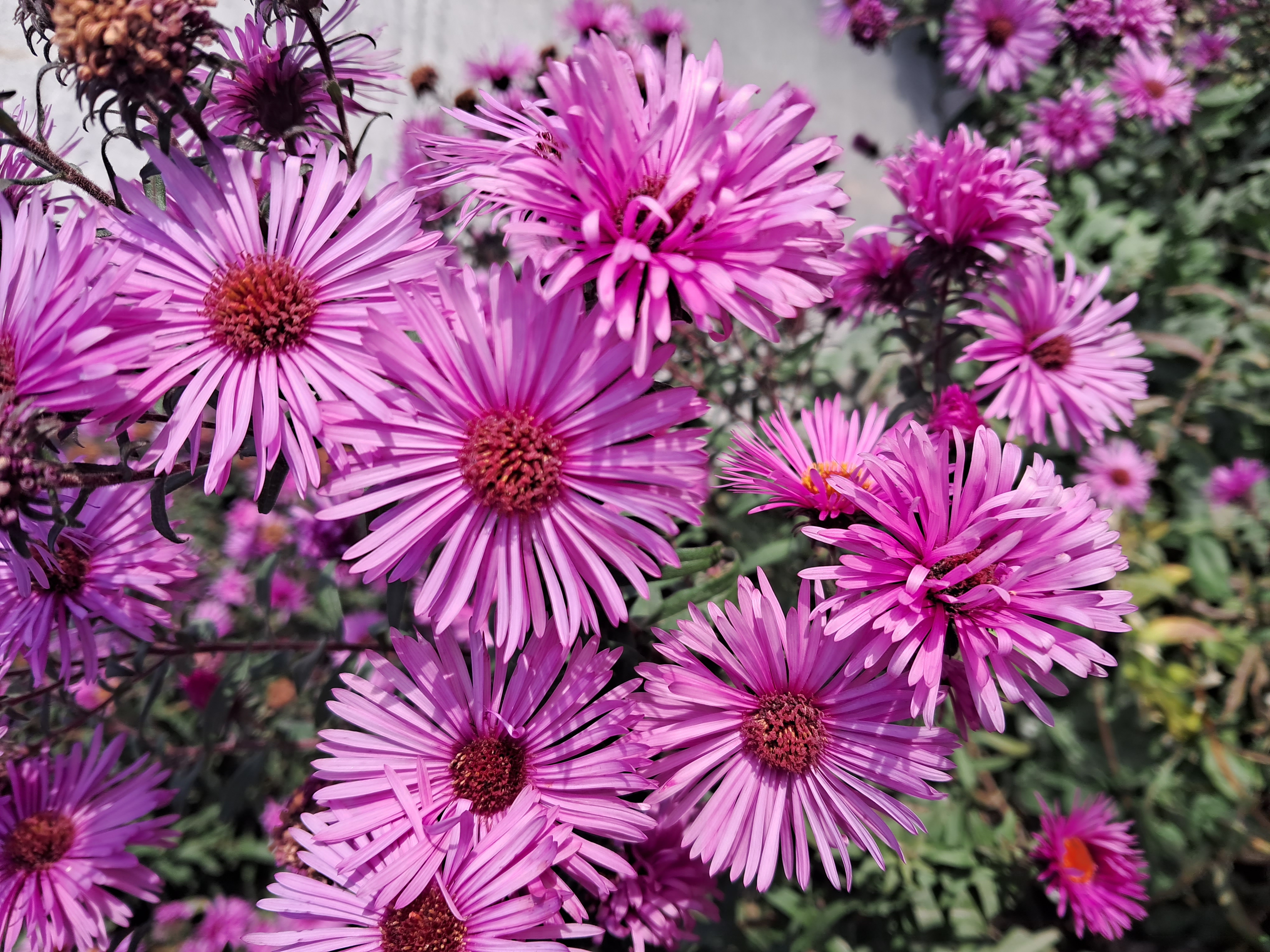
The next task is to treat the purple aster flowers with ammonia, or better yet, to simultaneously place the lilac and purple flowers in an ammonia atmosphere. |
|
Астра и аммиак - ч.21
Это замечательное многолетнее травянистое растение выращивают в наших садах и на клумбах, но оно встречается также и в дикорастущем виде (в степях и лесостепях). Цветы - сиреневые или пурпурные, мелкие. Напоминают ромашку - вполне симпатичные. Но растение известно не из-за красивых цветов или приятного аромата. Чем мне запомнилось данное растение - удивительной морозостойкостью. Оно цветет со средины лета до поздней осени. У нас данное растение называют "мороз". Почему? Часто растение продолжает цвести, когда начинаются заморозки. Выпал снег? Не проблема: цветение продолжается (главное, чтобы снег быстро растаял). Посмотрел научное название данного биологического вида, оказывается - Aster amellus, the European Michaelmas daisy, на украинском - Айстра волове око, по-русски - Астра ромашковая, далее в тексте - "астра". Октябрь. Снег еще не выпал, но заморозки уже были. В то время как большинство растений уже отцвело, астра продолжает радовать глаз. Под рукой были астры двух разных сортов, первый имел более мелкие сиреневые цветы, у второго цветы были более крупными, пурпурного цвета. Начал с сиреневых цветов (первый сорт). Закрепил цветок в стакане и добавил на дно концентрированный раствор аммиака (так, чтобы цветок был выше уровня жидкости). Изменение цвета началось: сиреневые лепестки цветка становились голубыми, данный процесс шел медленно и неравномерно (одни участки поверхности уже стали голубыми, другие сохраняли первоначальный сиреневый цвет). Подождав несколько минут, я смочил цветок концентрированным раствором аммиака с помощью пипетки. Большая часть поверхности лепестков постепенно стала голубой, после чего изменение цвета продолжилось: голубые участки приобретали зеленый оттенок. В это же время другие участки цветка так и остались сиреневыми. Ждать полного изменения цвета нет стал - прекратил эксперимент. Следующая задача - подействовать аммиаком на пурпурные цветы астры, а еще лучше - поместить сиреневые и пурпурные цветы в атмосферу аммиака одновременно. |
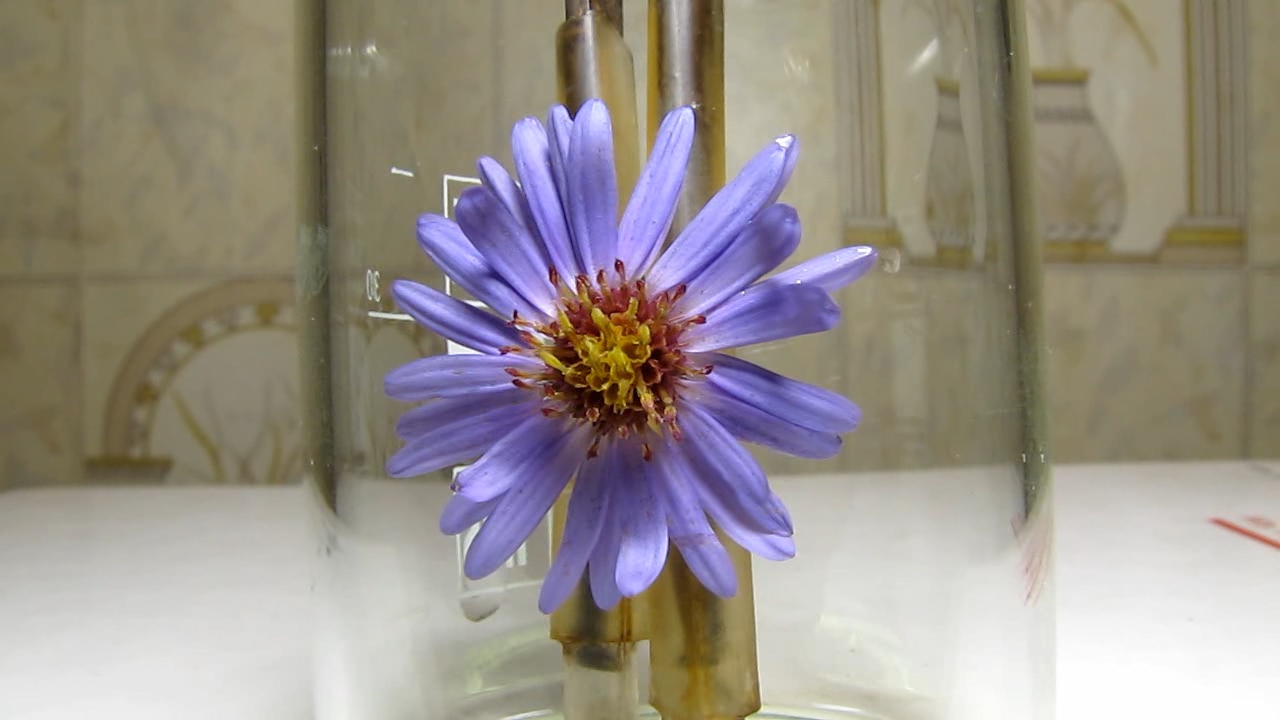
Aster amellus and ammonia |
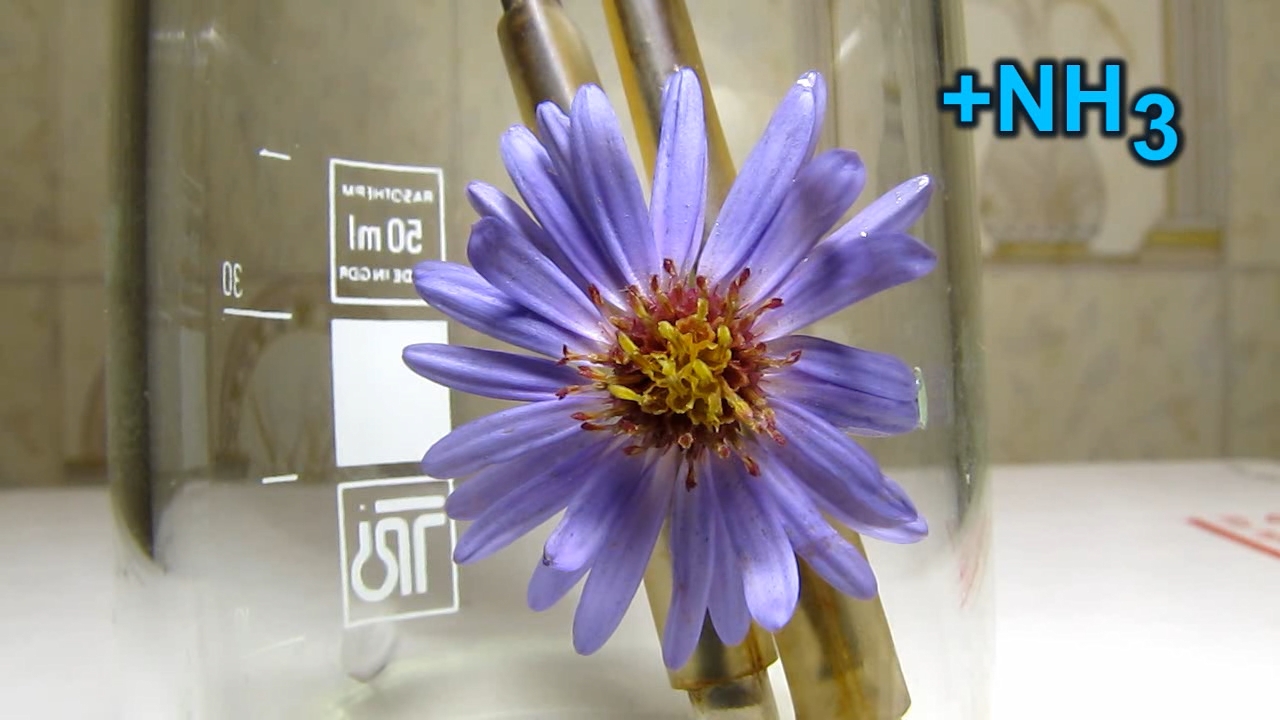
|

|
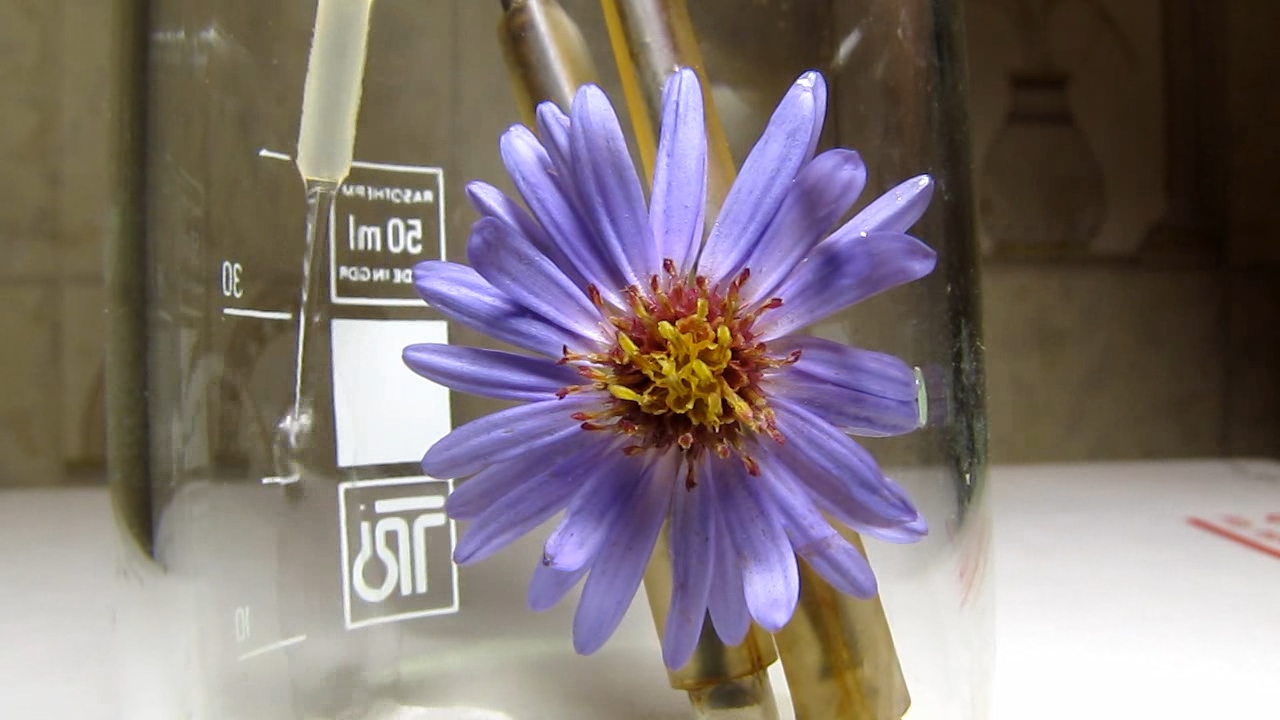
|

|
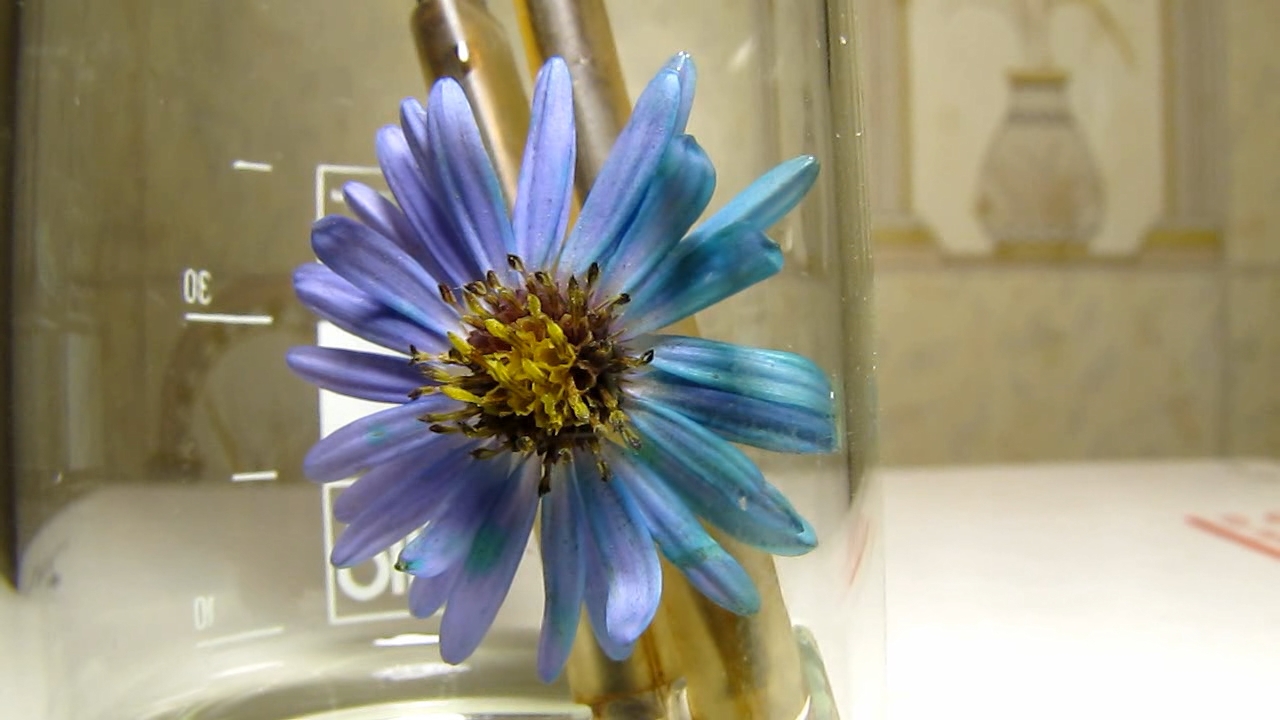
|
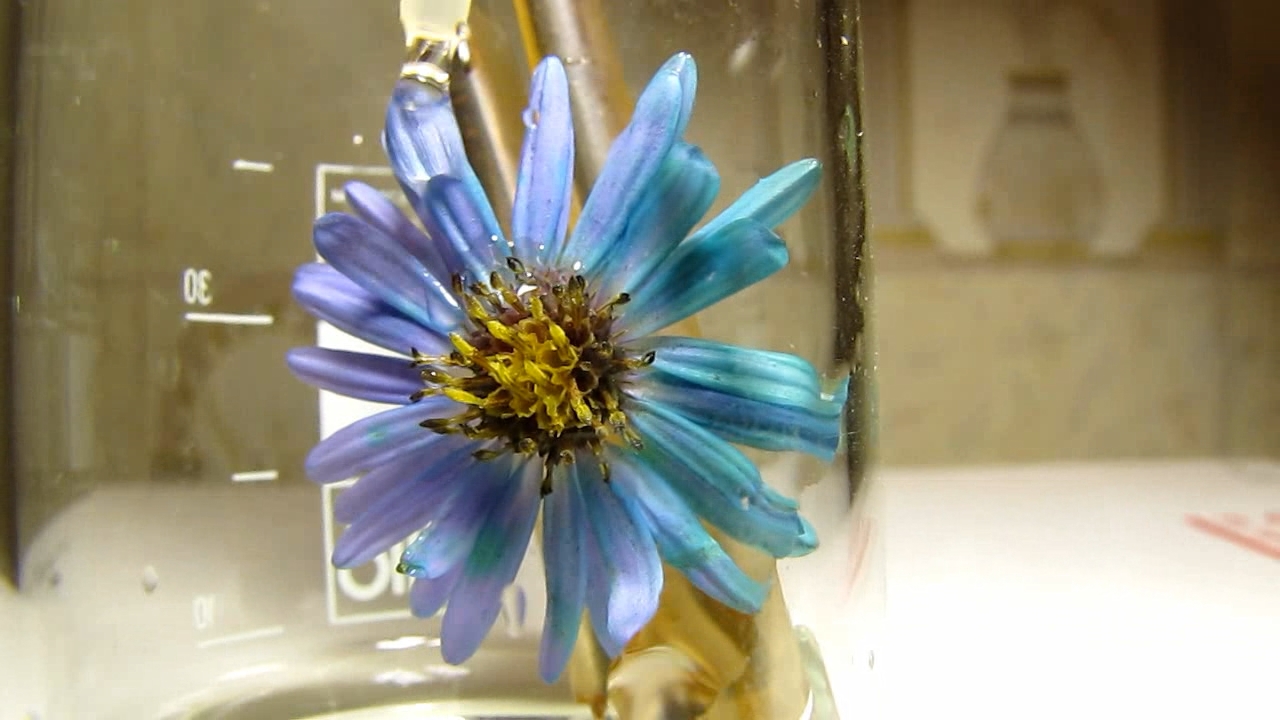
|

|

|
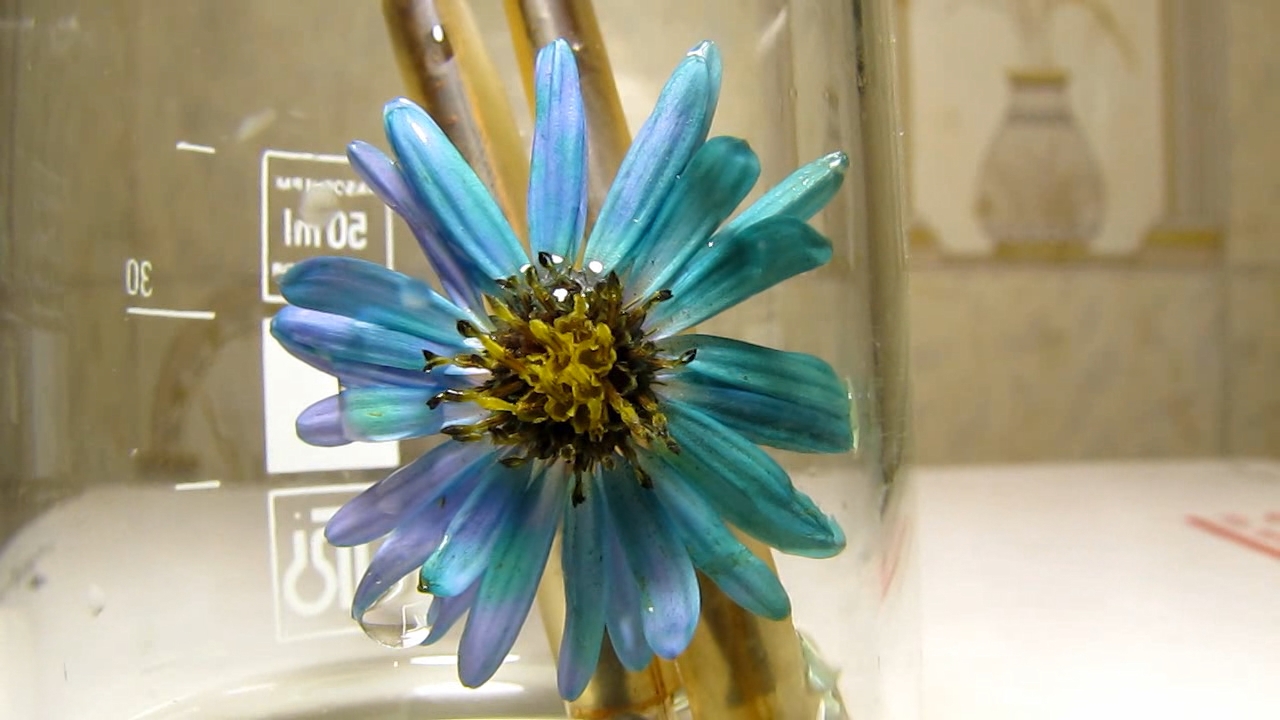
|
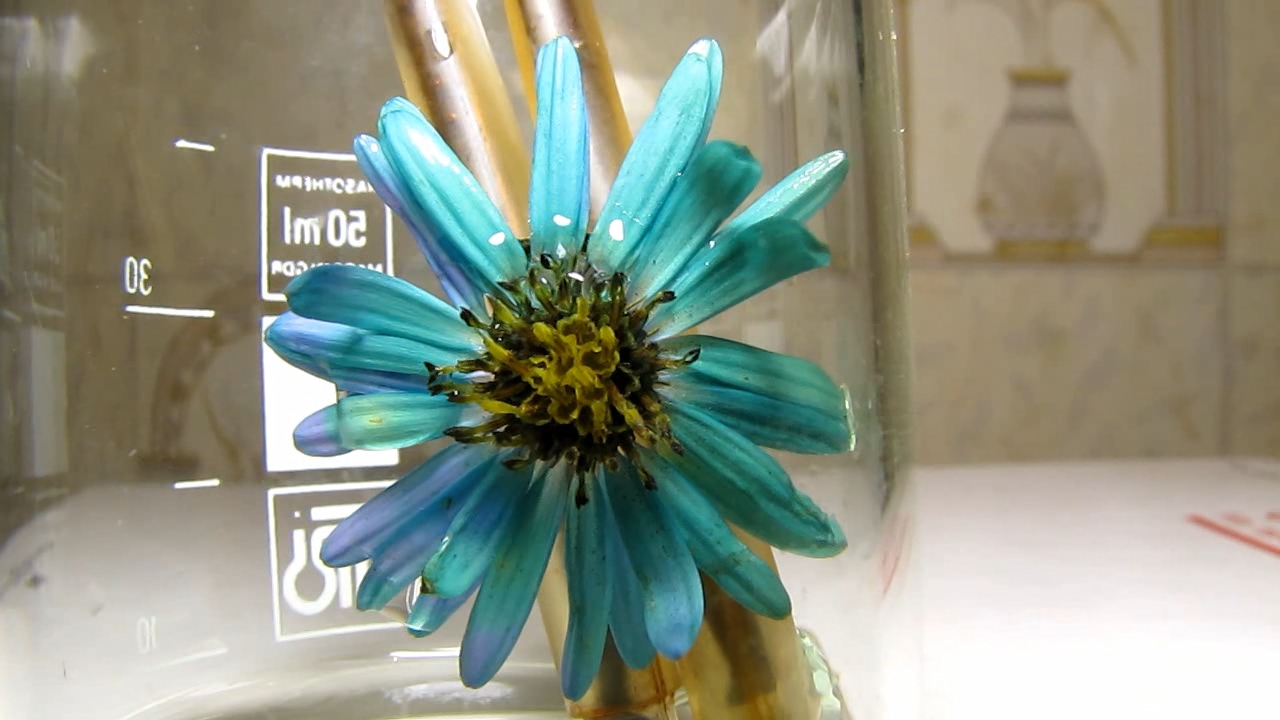
|

|

|
|
Aster amellus and ammonia (continuation) - pt.22
I fixed the lilac aster flower in a glass (in the future referred to as “lilac aster flower”) and attached the larger purple one above it (in the future referred to as the “purple aster flower”). Then, I added concentrated ammonia to the beaker. I carefully wet the flowers with the solution to speed up the colour change.
The lilac aster flower (attached lower) quickly began to change colour: it became blue. Then, the blue petals got a green tint. Later, the greenish-blue petals turned green, and finally, the green petals turned yellow. The purple aster flower (attached above) gradually and unevenly began to change its colour to grey-blue. The colour of this flower changed much more slowly (compared to the smaller flower below it). More and more of the surface of the petals acquired a grey-blue colour. Then, yellow areas began to appear on the flower petals. A few words about how the processes correlated over time. While the lilac aster flower completely changed colour (it became first blue and then green), the purple aster flower only partially changed its original colour: some areas of the petals became grey-blue, but others remained purple. Eventually, the lilac aster flower gradually turned yellow. Meanwhile, the purple aster flower was a mosaic: most of its surface was grey-blue, some areas turned yellow, and some remained purple still. The area of the yellow areas was increasing, and the purple areas were becoming less and less. Finally, the purple areas have entirely disappeared, and the yellow areas have taken up most of the surface. Eventually, the lilac aster flower turned completely yellow, and the purple aster flower mainly turned yellow. At this stage, the experiment was stopped (breathing ammonia may be “cool”, but it is not very good for health). |
|
Астра и аммиак (продолжение) - ч.22
Закрепил в стакане меньший сиреневый цветок астры (далее в тексте - "сиреневый цветок астры"), а над ним - больший пурпурный (далее в тексте - "пурпурный цветок астры"). Добавил в стакан концентрированный аммиак. Для ускорения изменения цвета осторожно смочил цветы раствором.
Сиреневый цветок, закрепленный снизу, быстро начал менять цвет: он становился голубым. Потом голубые лепестки приобрели зеленый оттенок. Дальше зеленовато-голубые лепестки стали зелеными. И, наконец, зеленые лепестки стали желтыми. Пурпурный цветок астры, закрепленный выше, постепенно и неравномерно стал менять цвет на серо-голубой. Окраска данного цветка изменялась гораздо медленнее (по сравнению с меньшим цветком под ним). Все большая часть поверхности лепестков приобретала серо-голубой цвет. Затем на цветке стали появляться желтые участки. Несколько слов, как соотносились процессы во времени. В то время, когда сиреневый цветок астры полностью изменил окраску (он стал сначала голубым, а потом зеленым), пурпурный цветок астры лишь частично изменил первоначальный цвет: одни участки лепестков стали серо-голубыми, зато другие еще оставались пурпурными. В конечном итоге сиреневый цветок астры постепенно стал желтым. Тем временем пурпурный цветок представлял собой мозаику: основная часть его поверхности была серо-синей, некоторые участки стали желтыми, а некоторые пока остались пурпурными. Площадь желтых участков становилось все больше, пурпурных - все меньше. Пурпурные участки окончательно исчезли, а желтые - заняли большую часть поверхности. В конечном итоге сиреневый цветок астры полностью стал желтым, а пурпурный цветок астры - преимущественно желтым. На этом этапе эксперимент прекратил (дышать аммиаком, - может быть и "круто", не очень полезно для здоровья). |

Aster amellus |
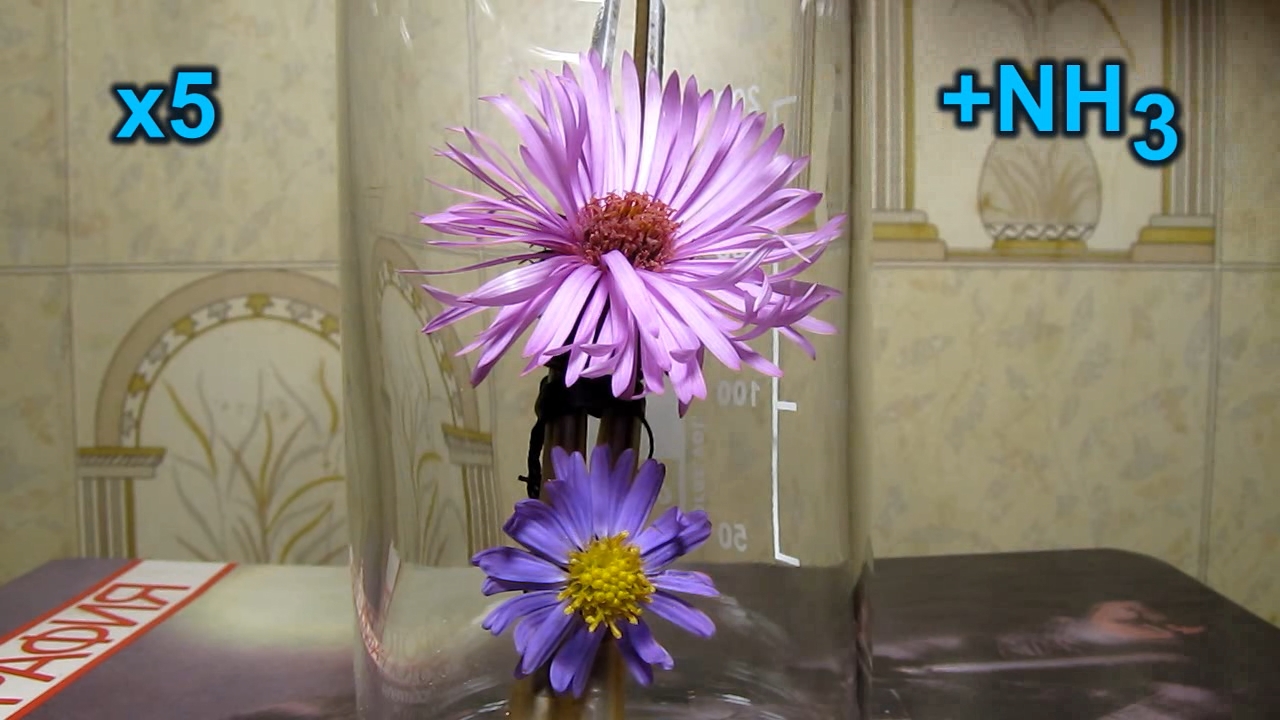
Aster amellus and ammonia |
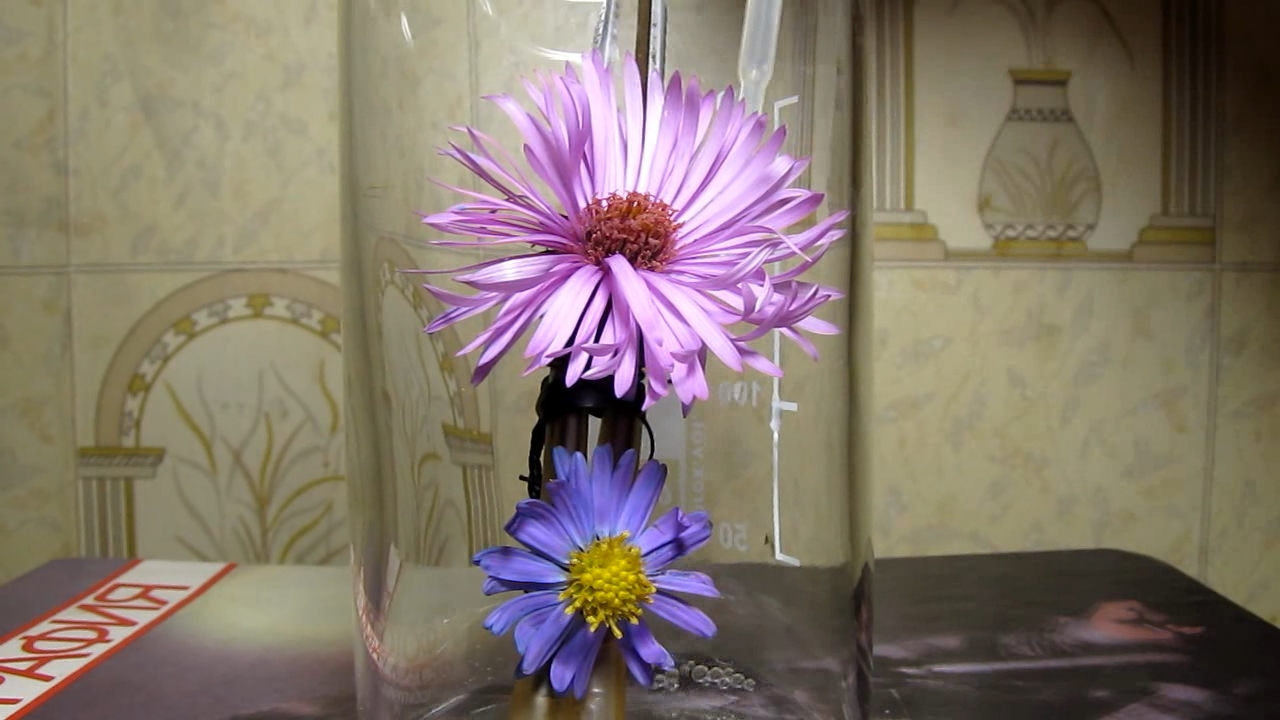
|
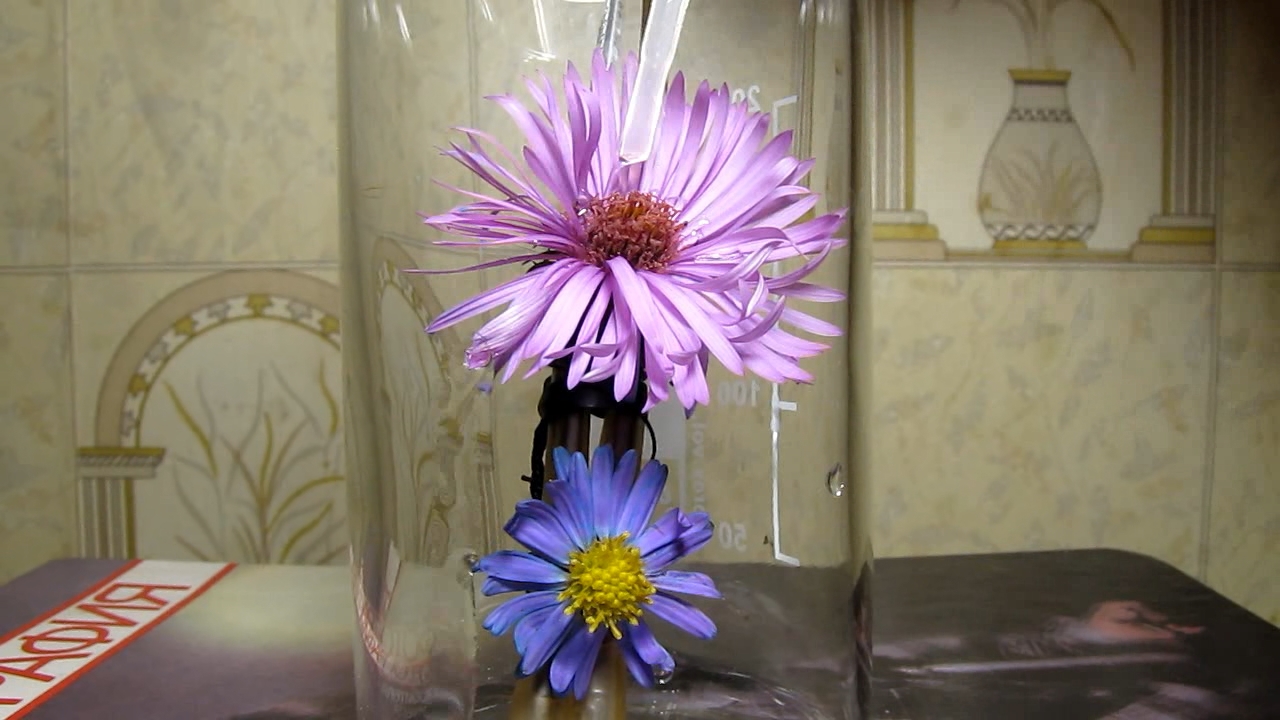
|
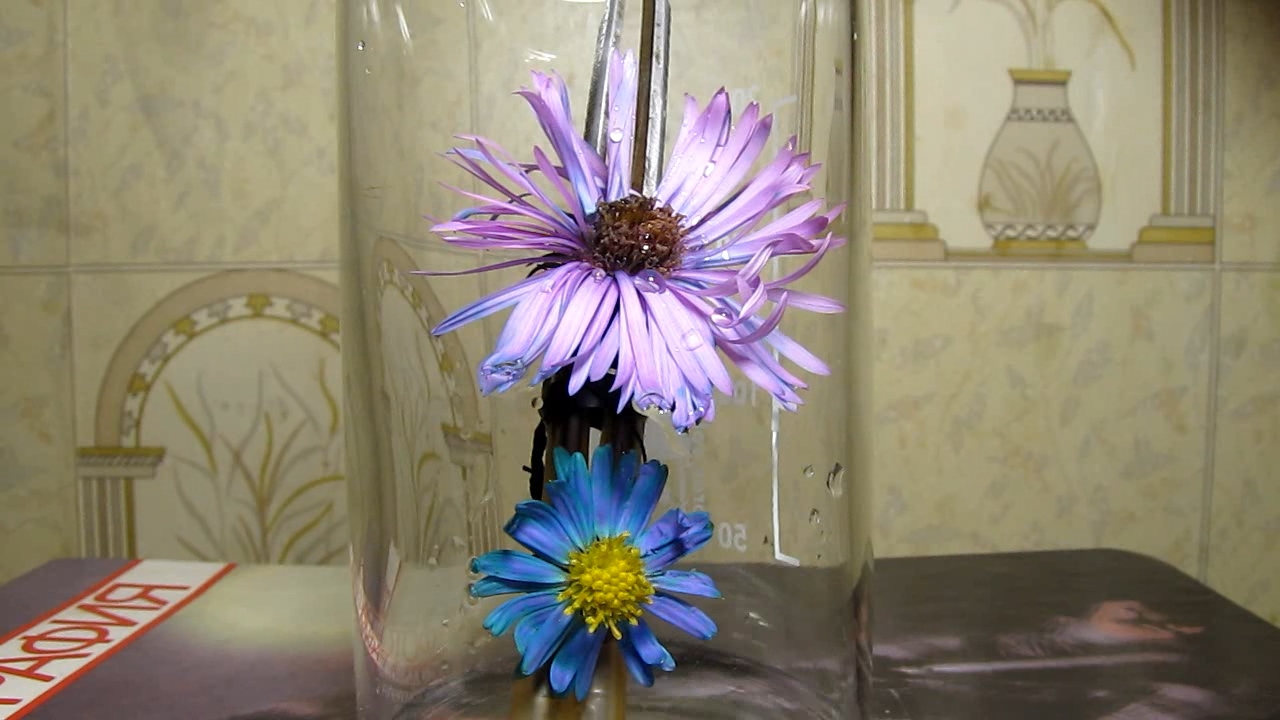
|
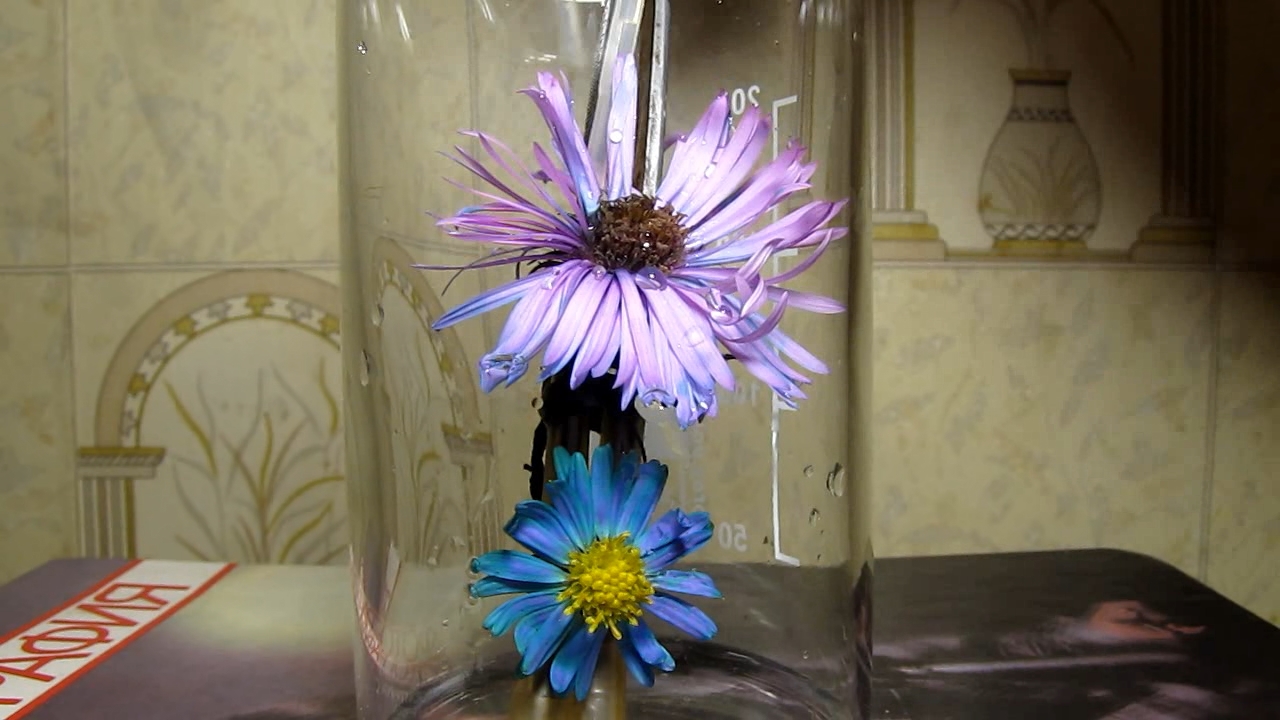
|
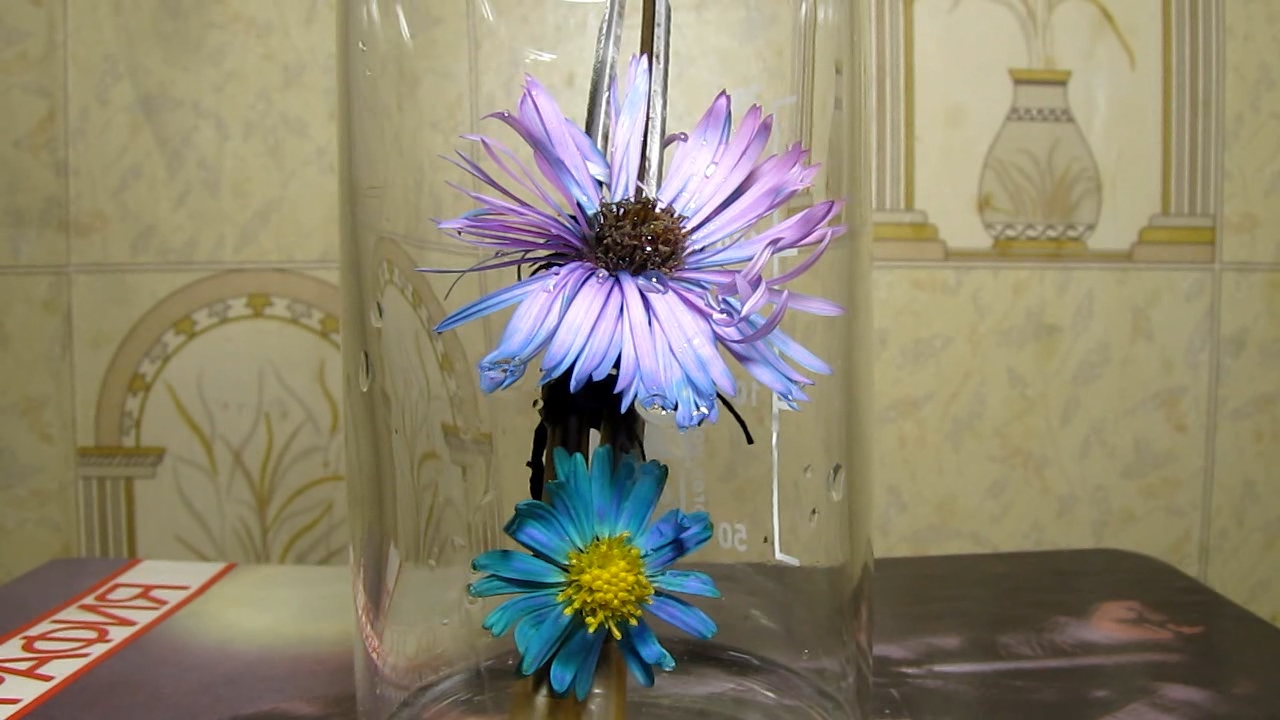
|
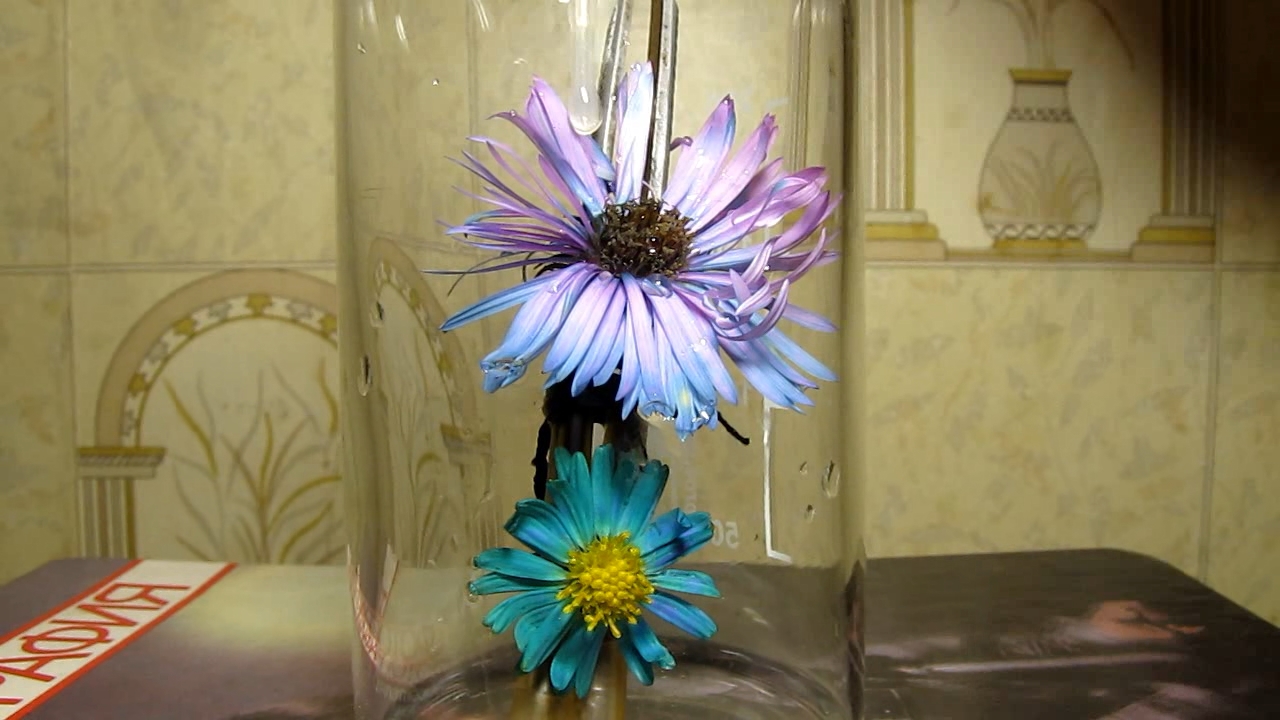
|

|

|
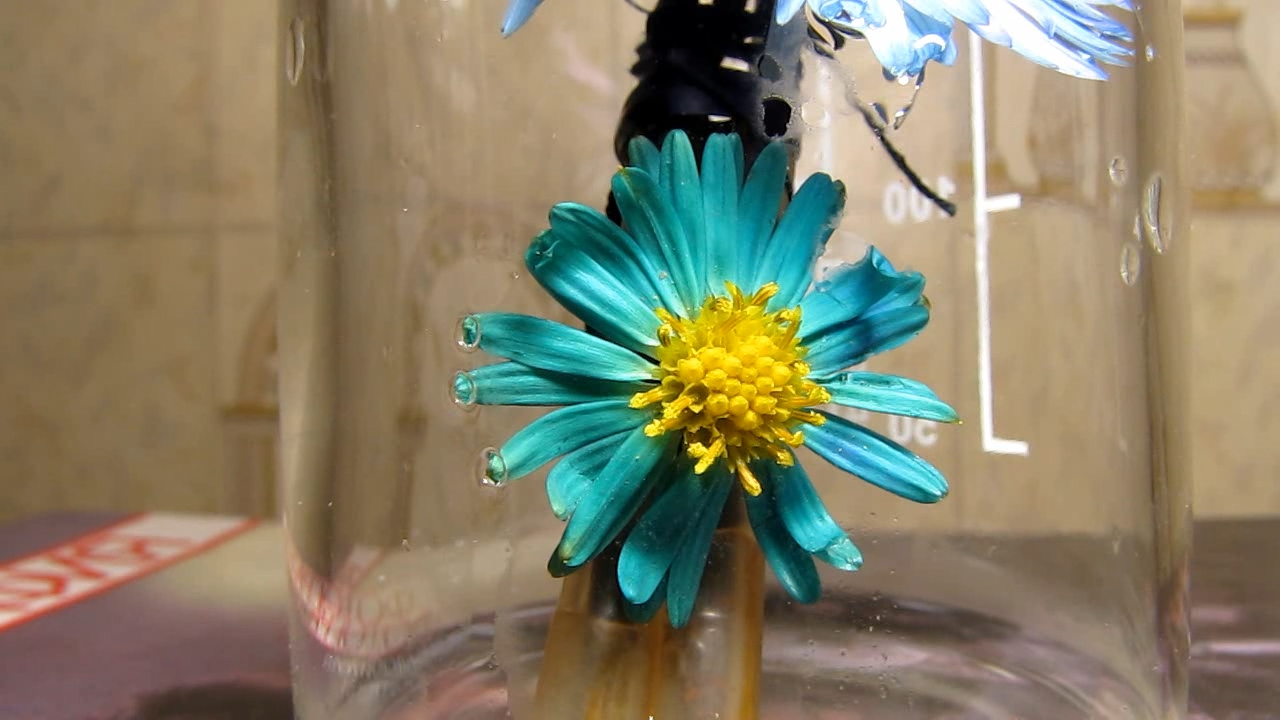
|
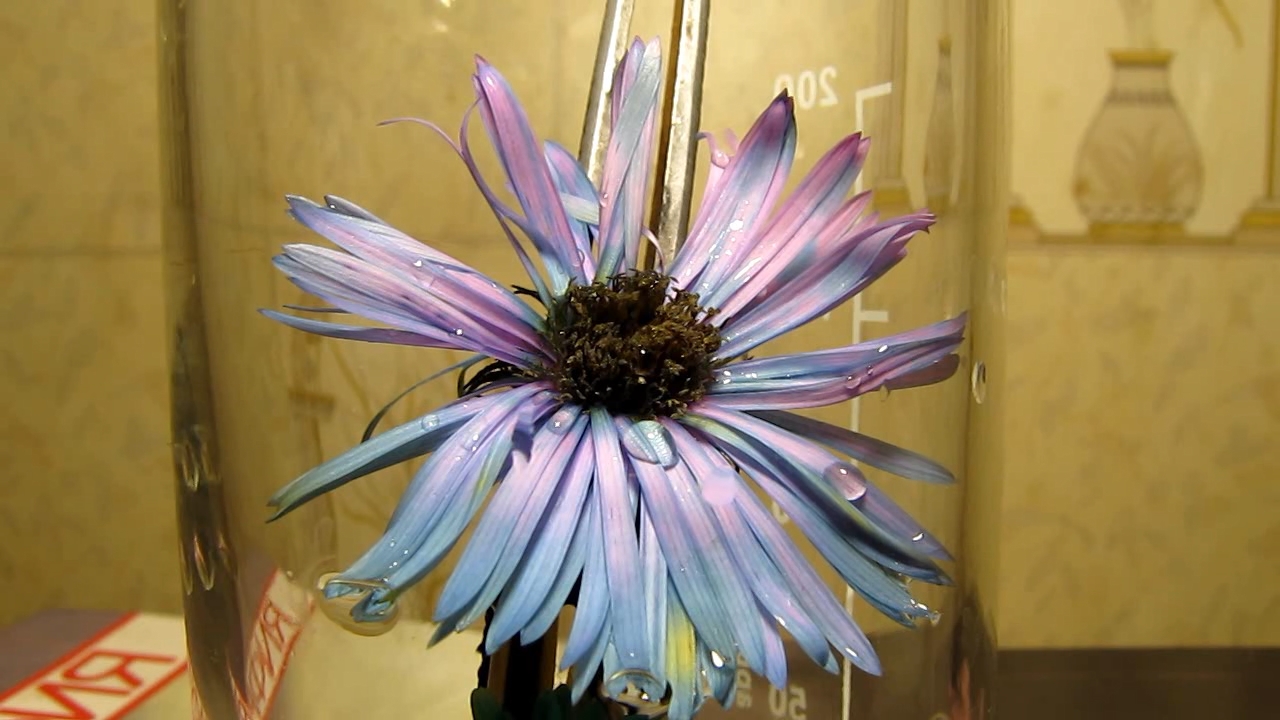
|

|

|
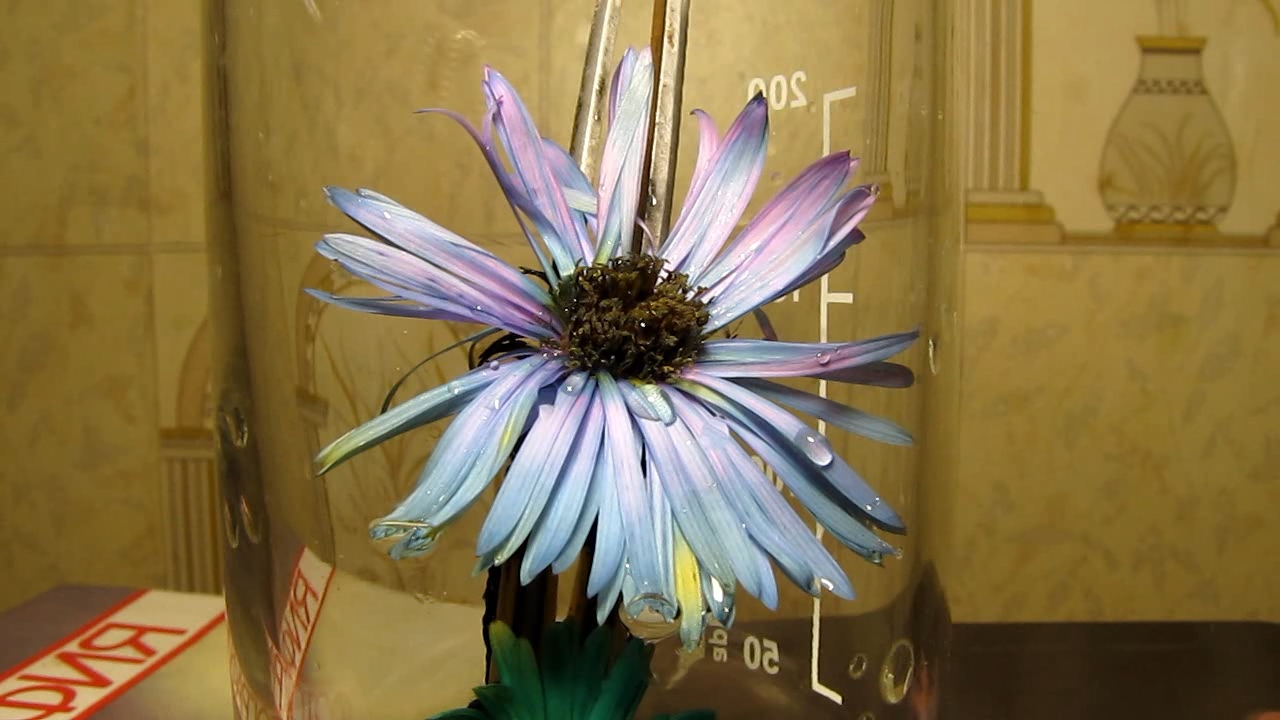
|
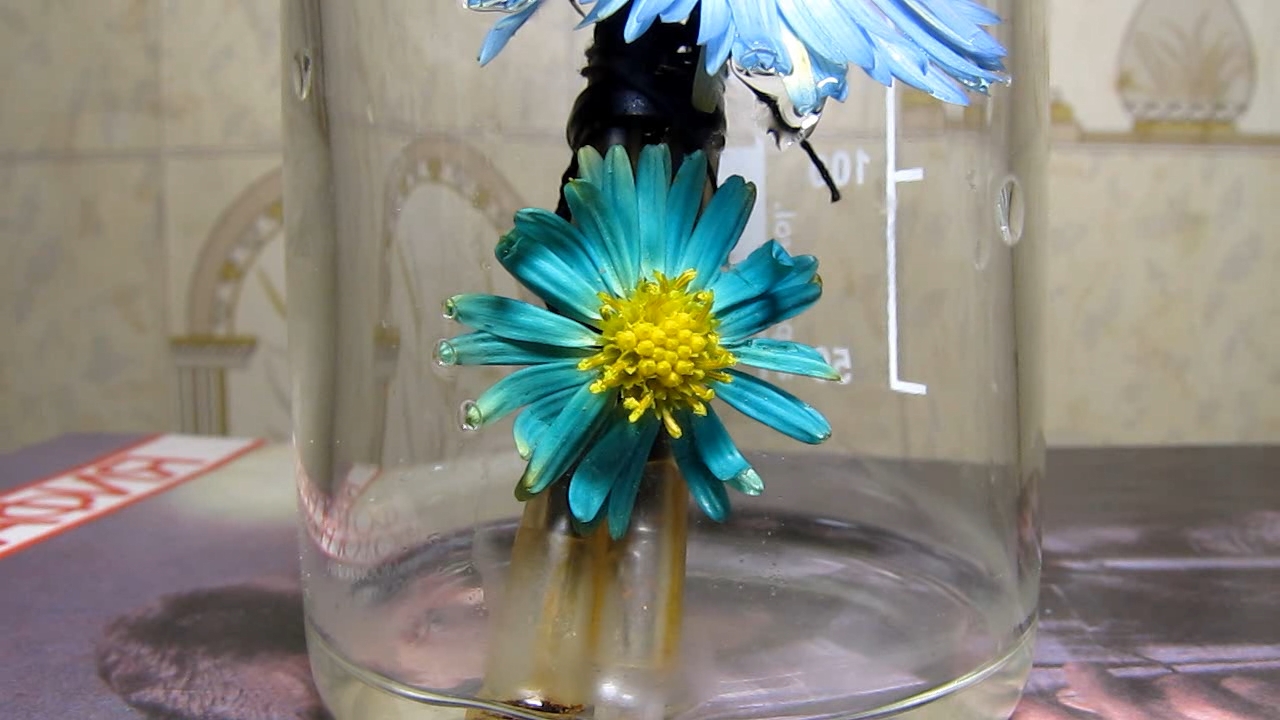
|
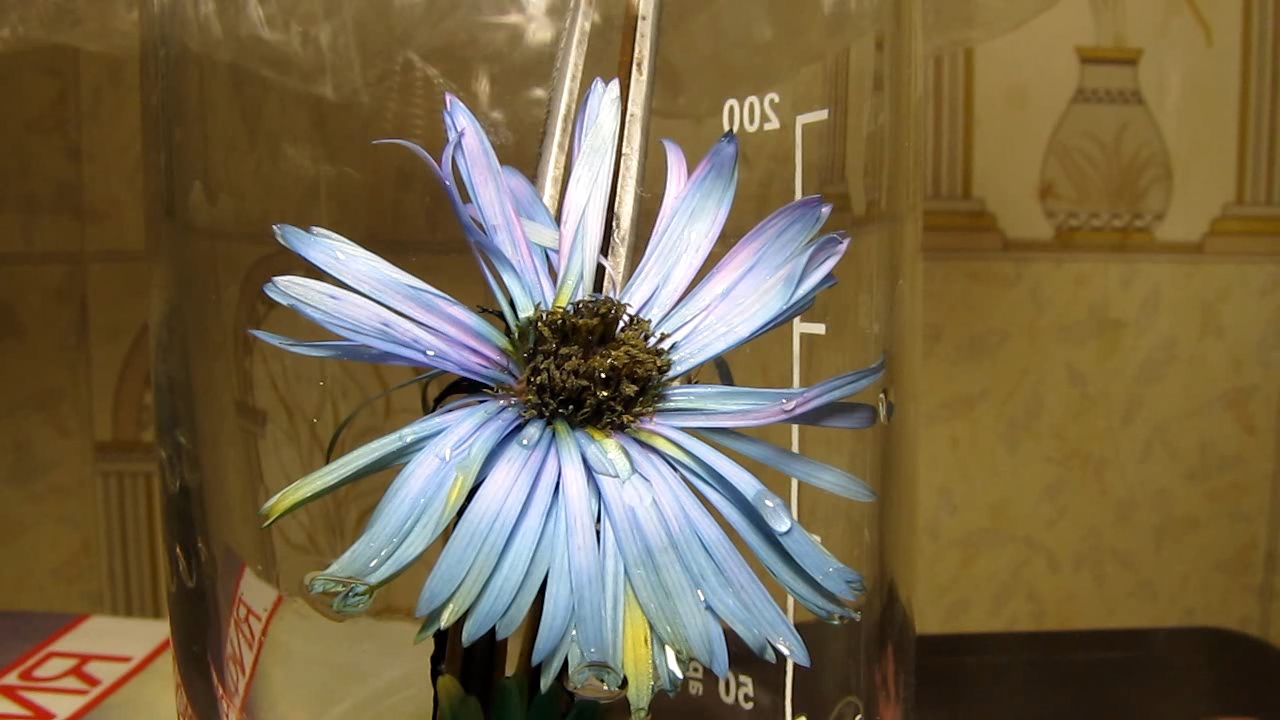
|
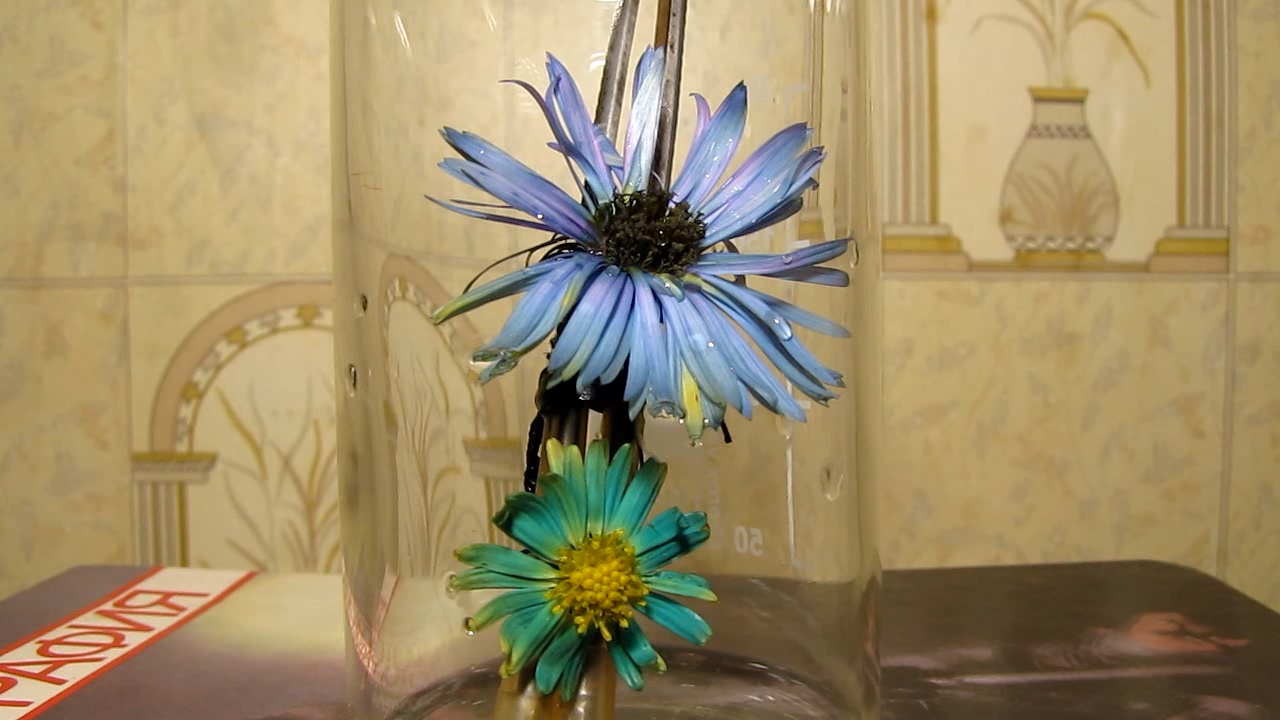
|
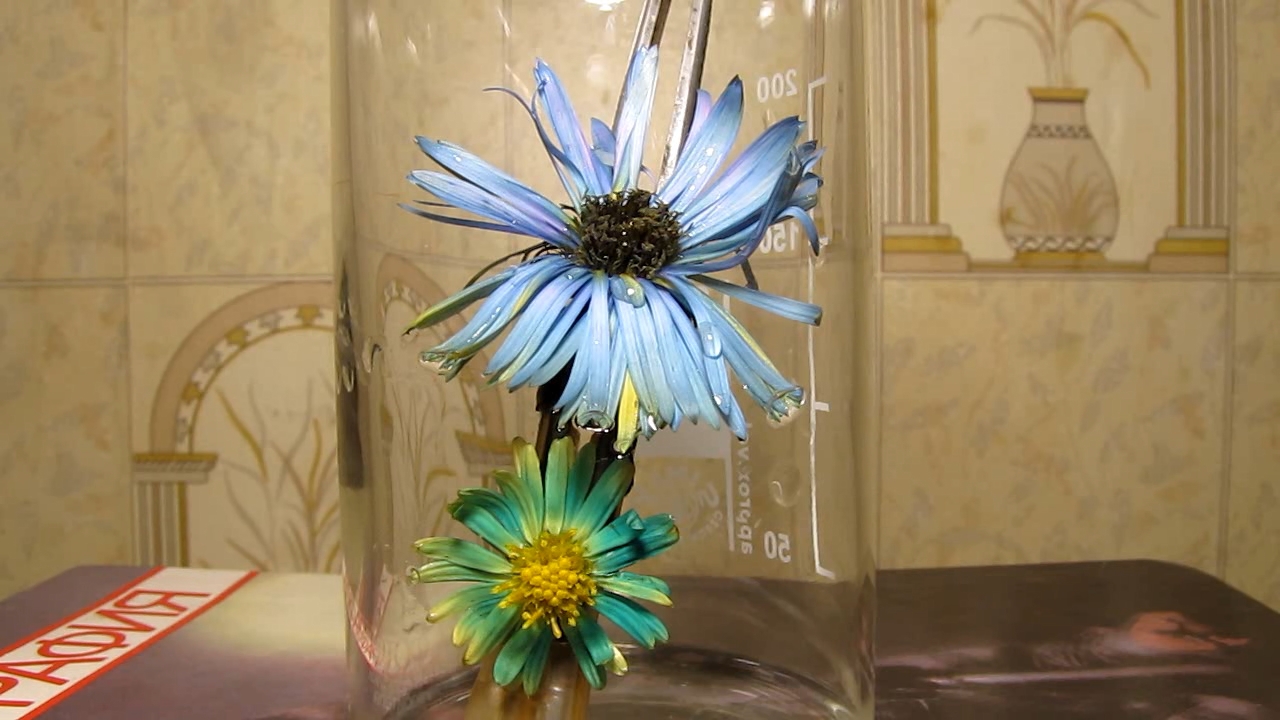
|
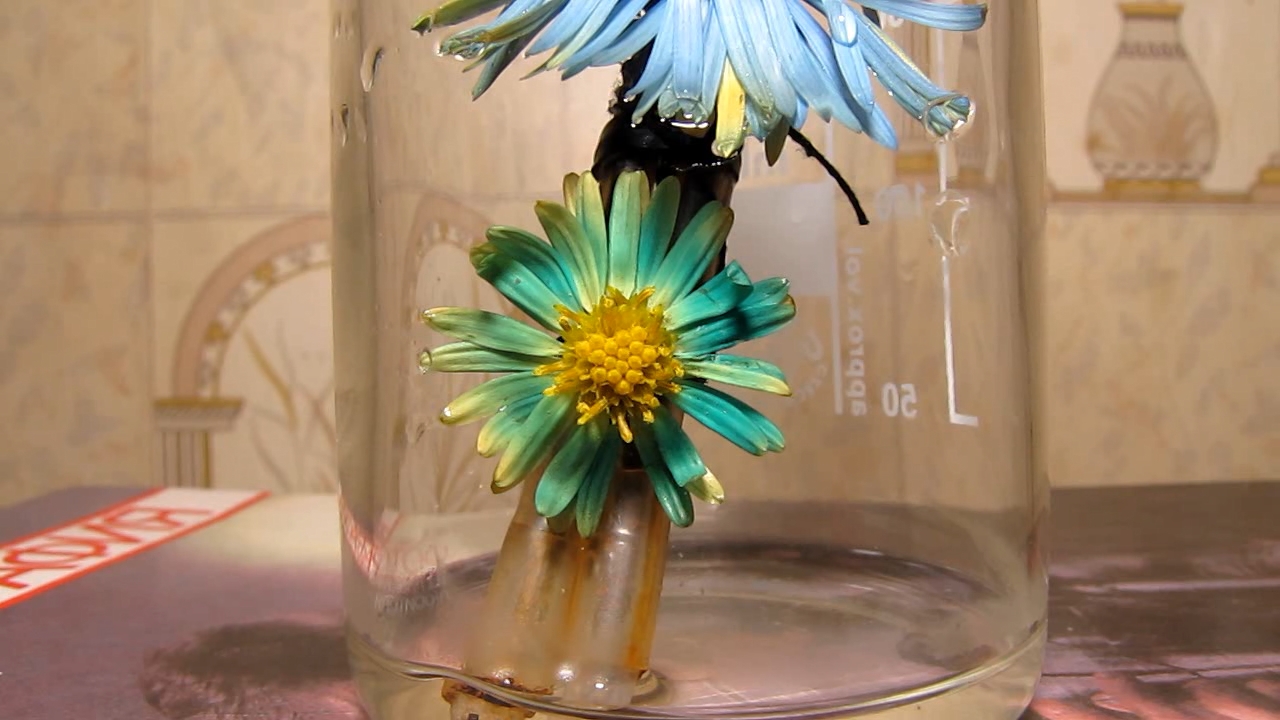
|
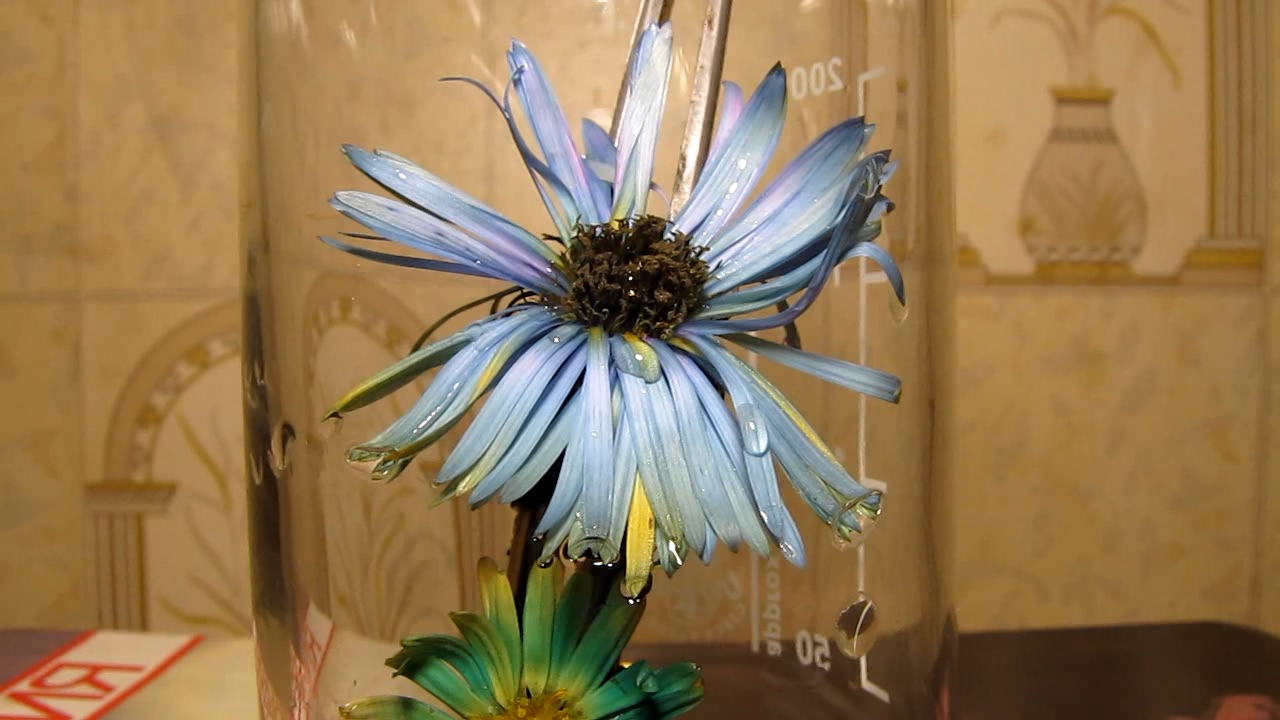
|

|
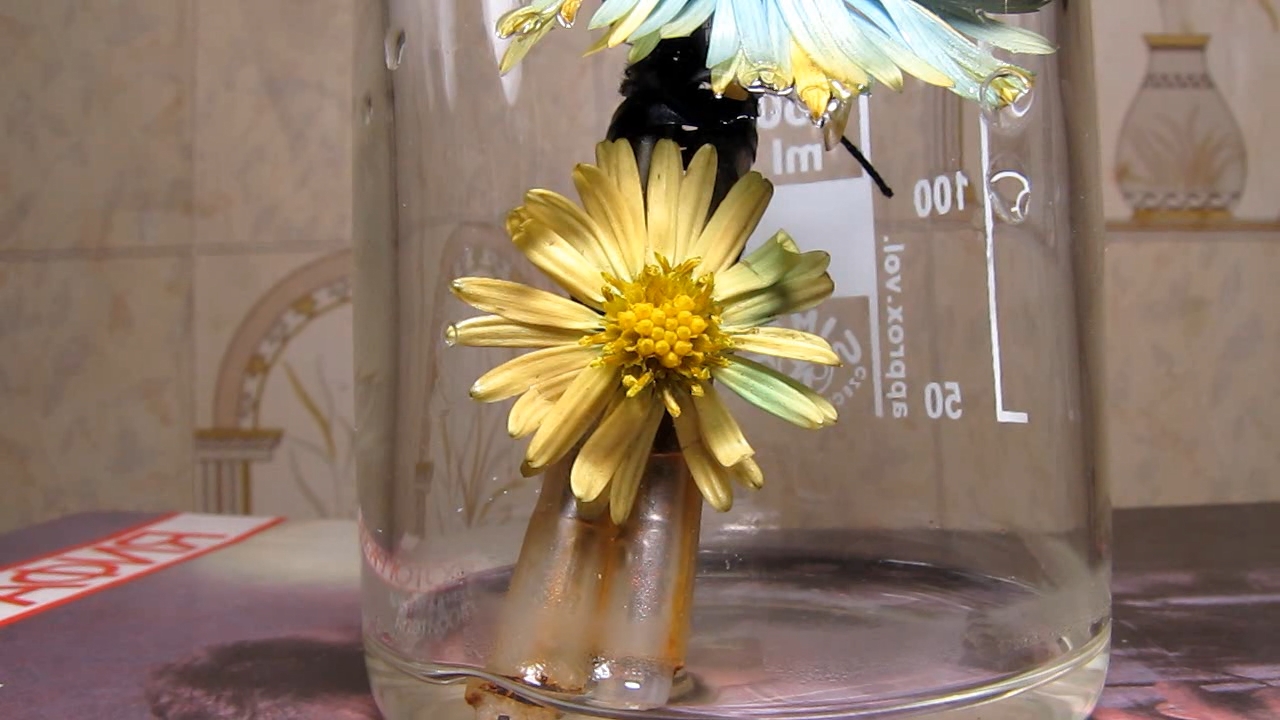
|

|
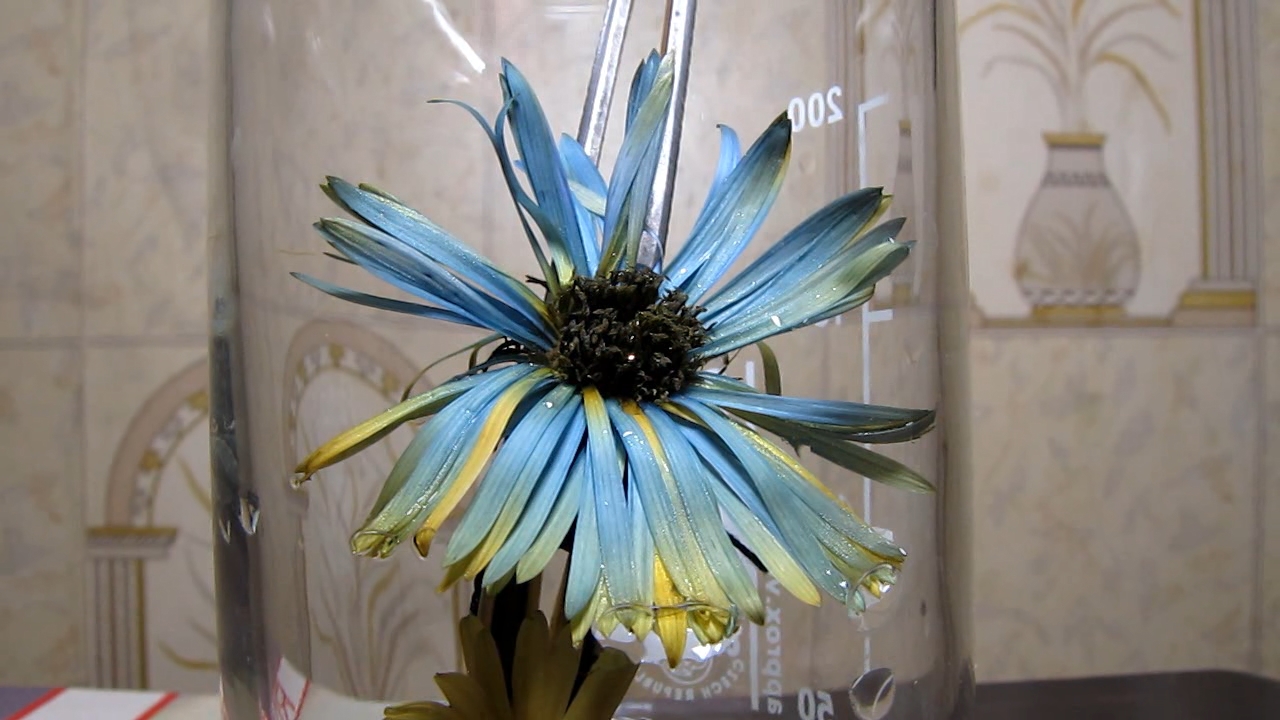
|
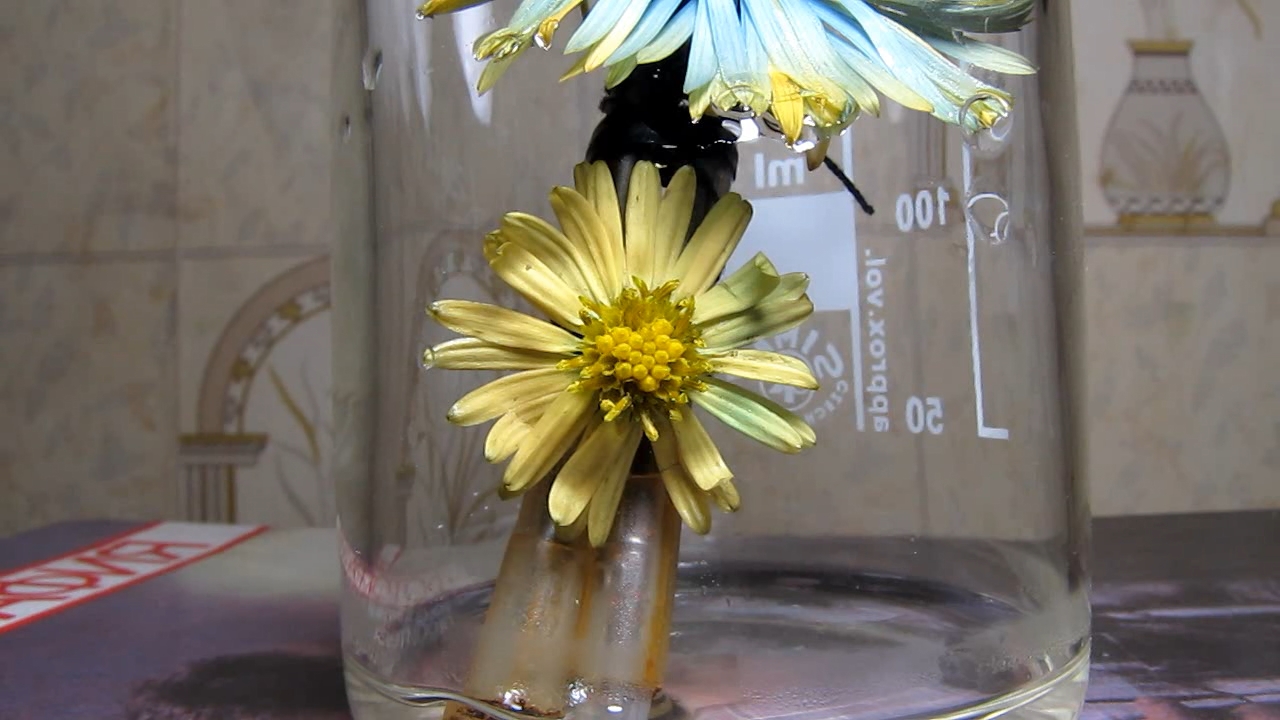
|

|
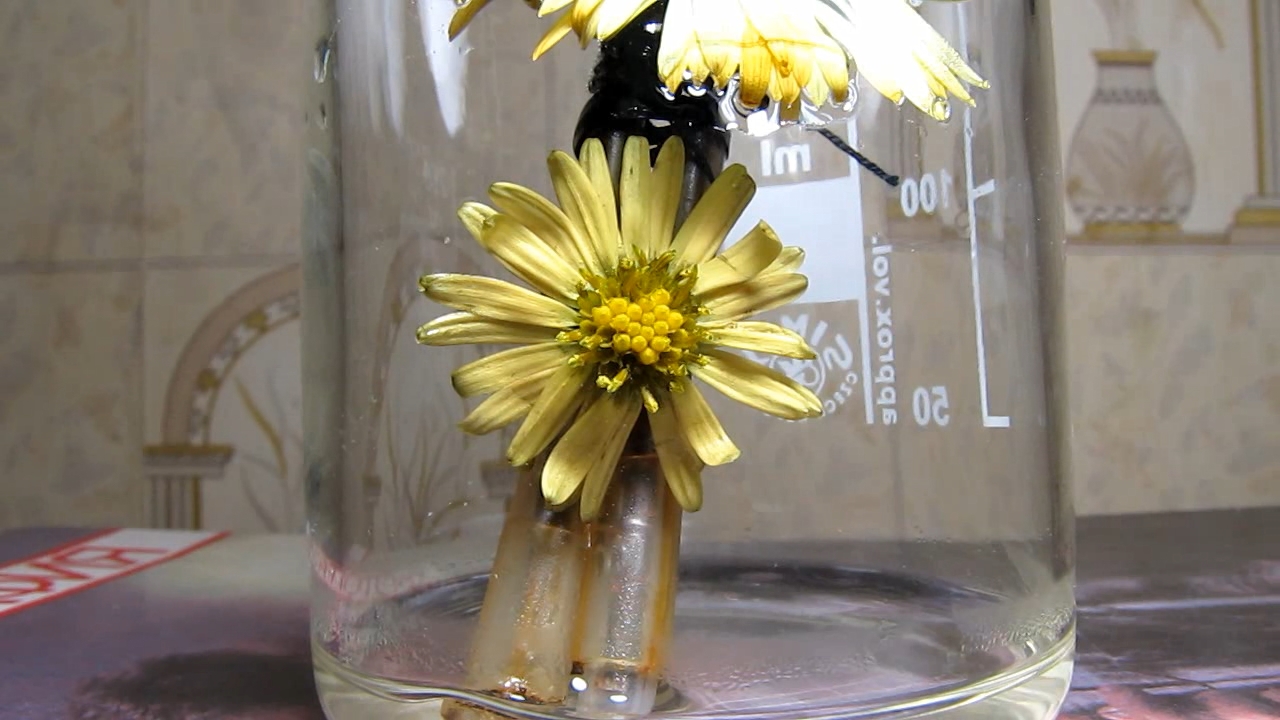
|
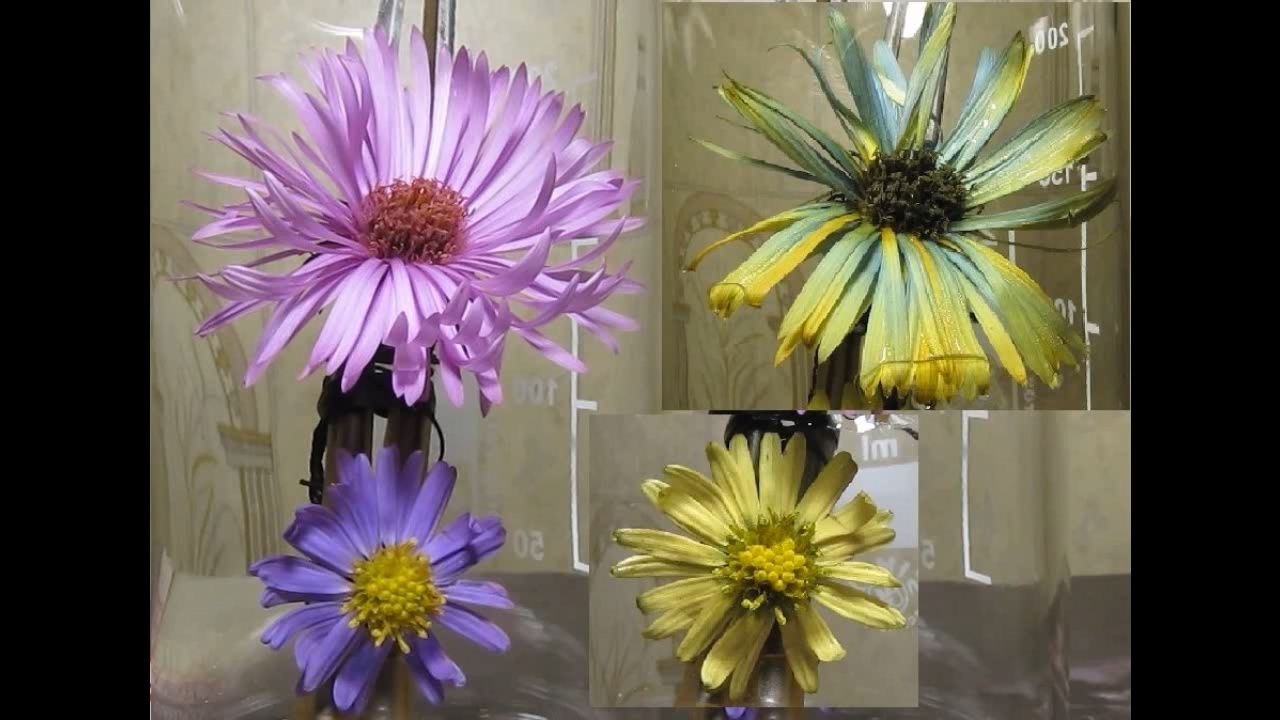
|